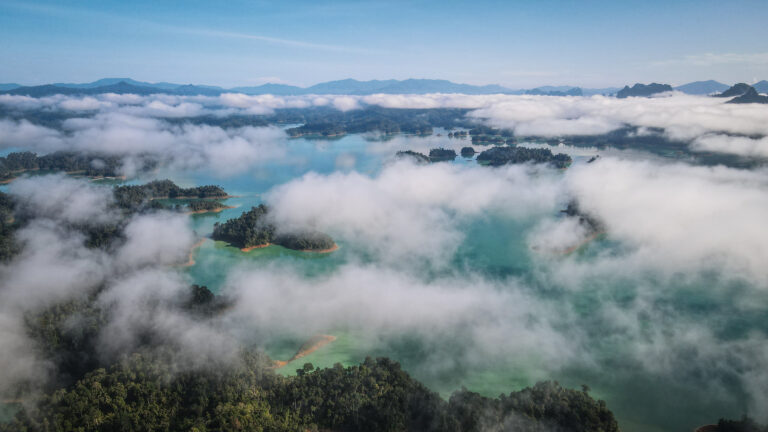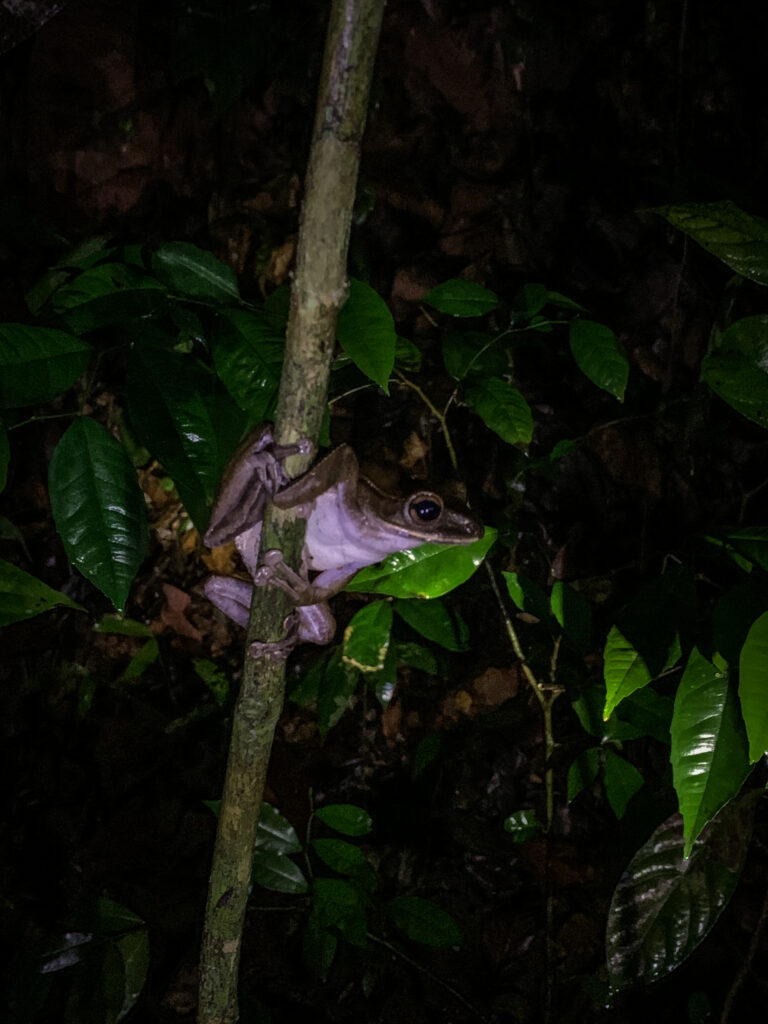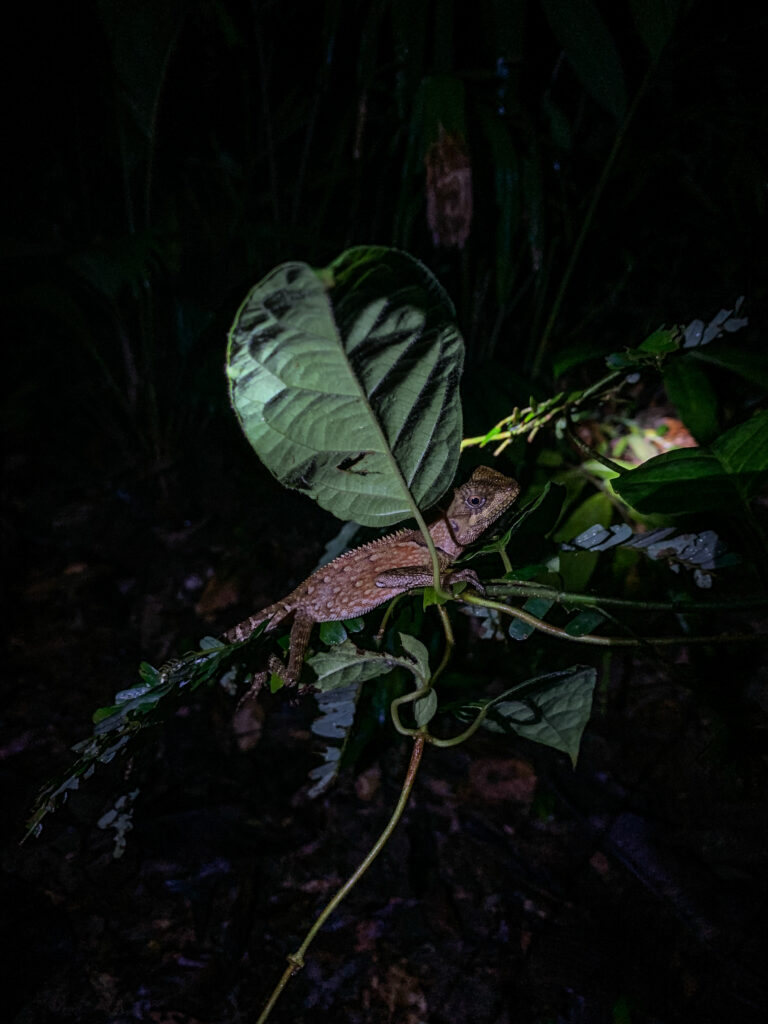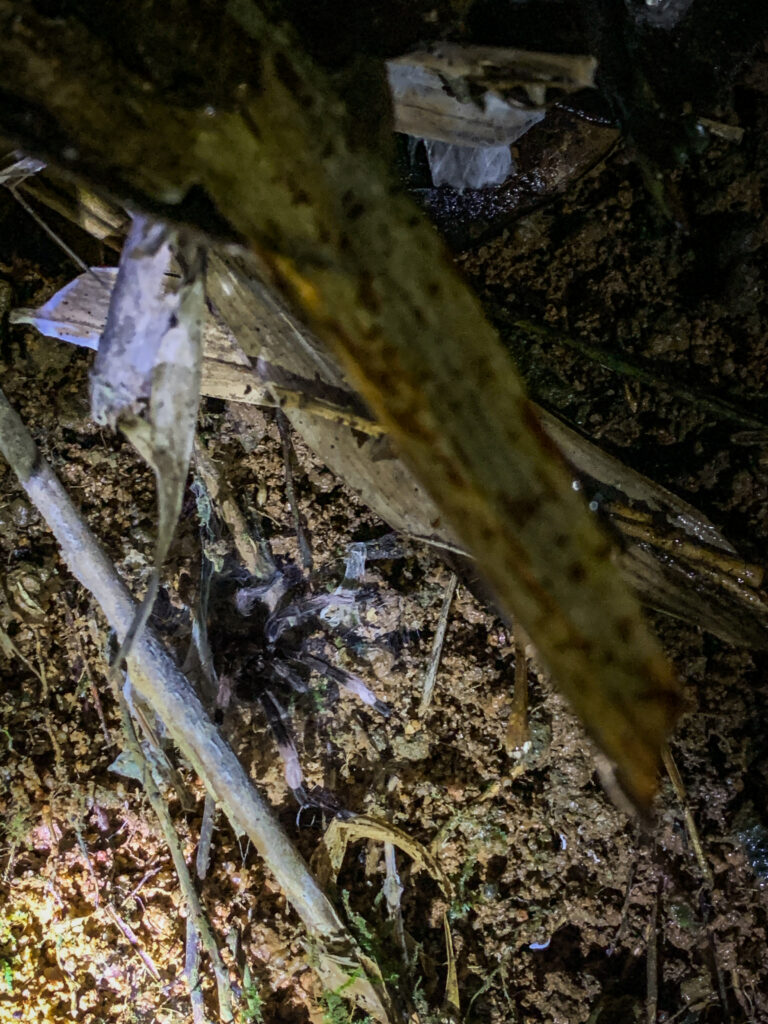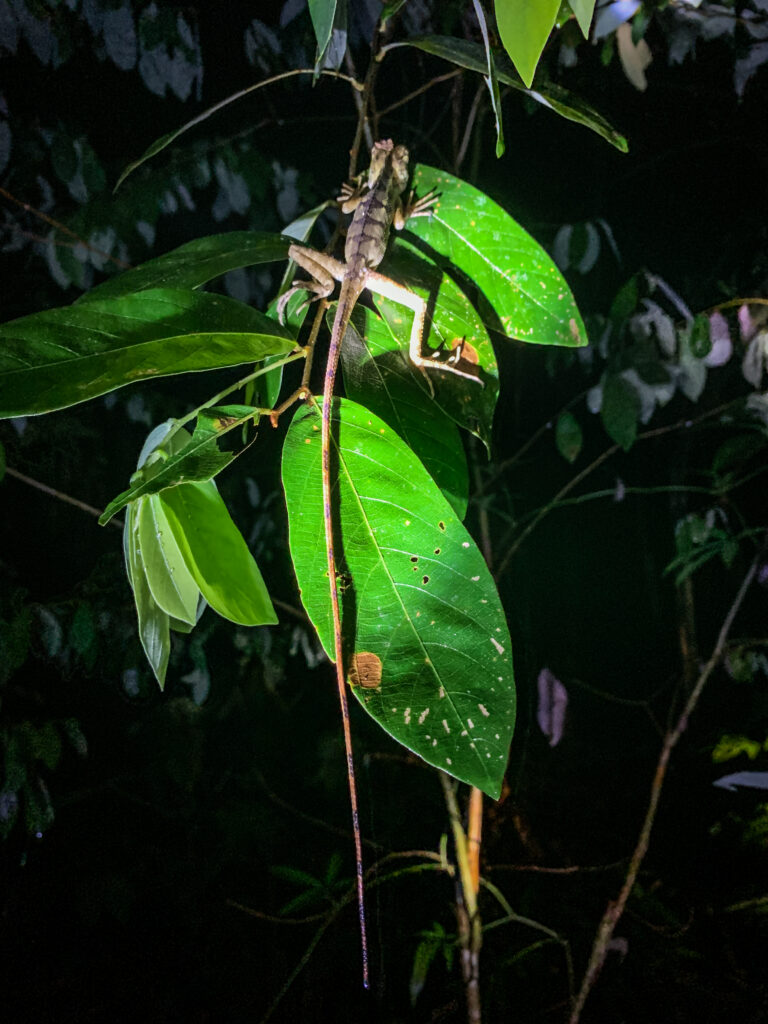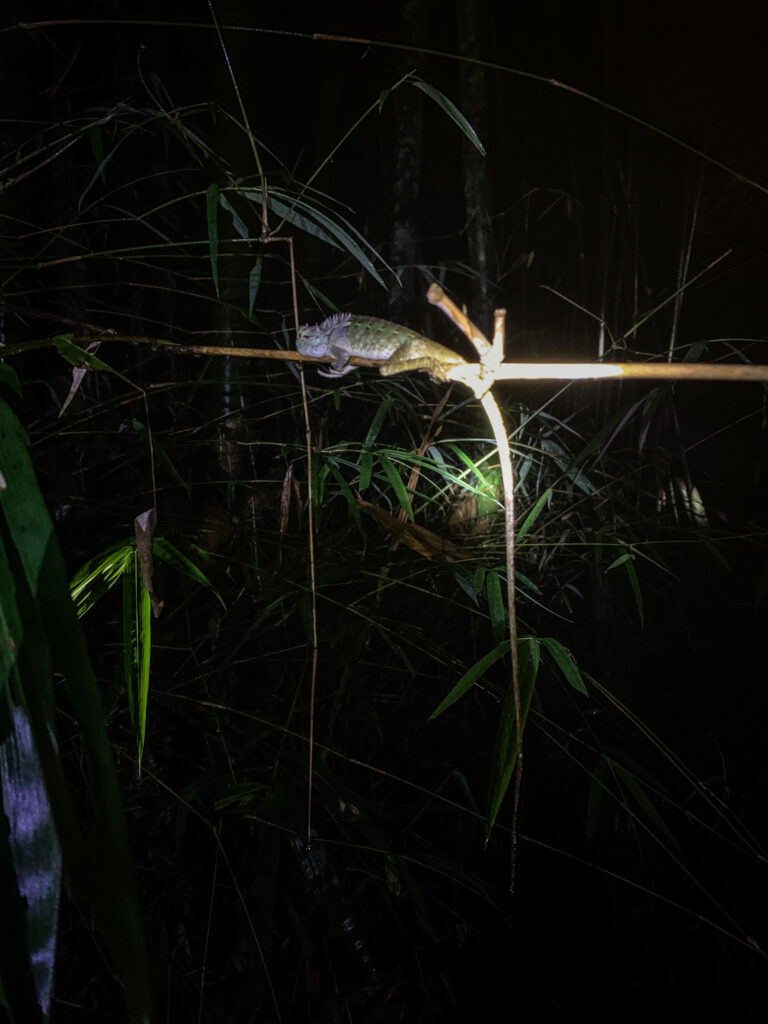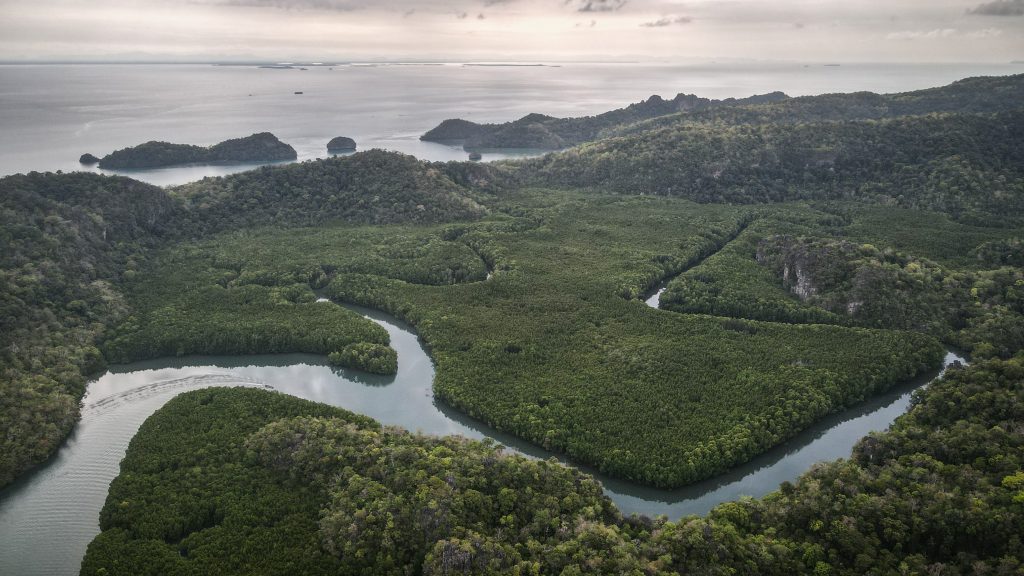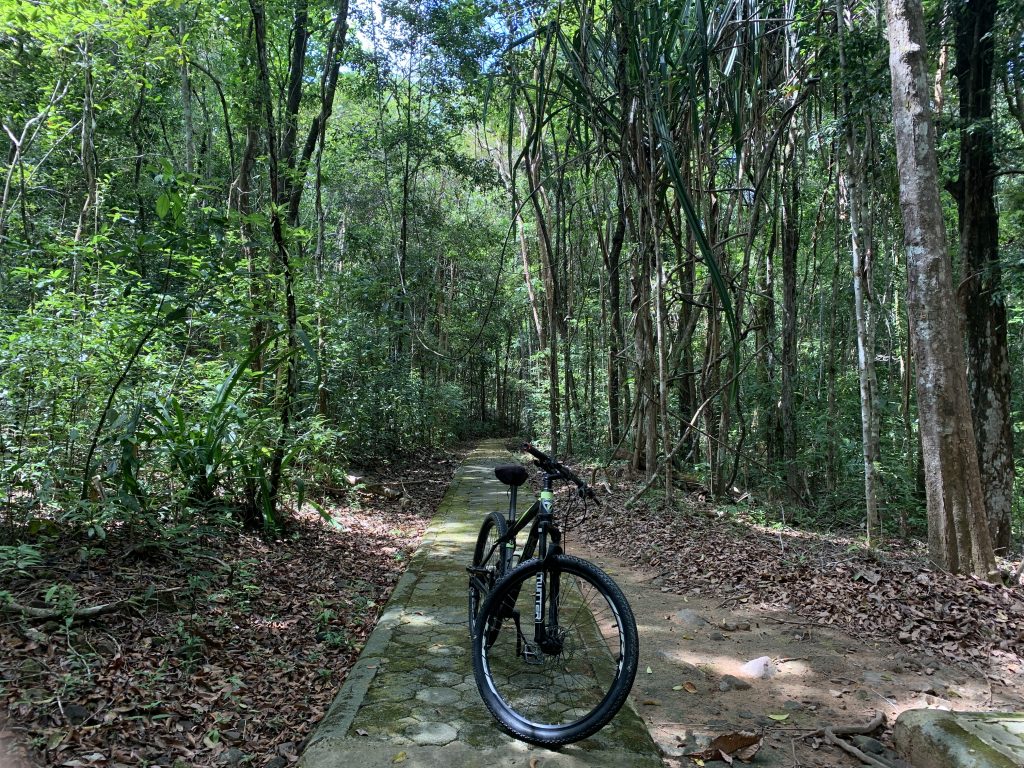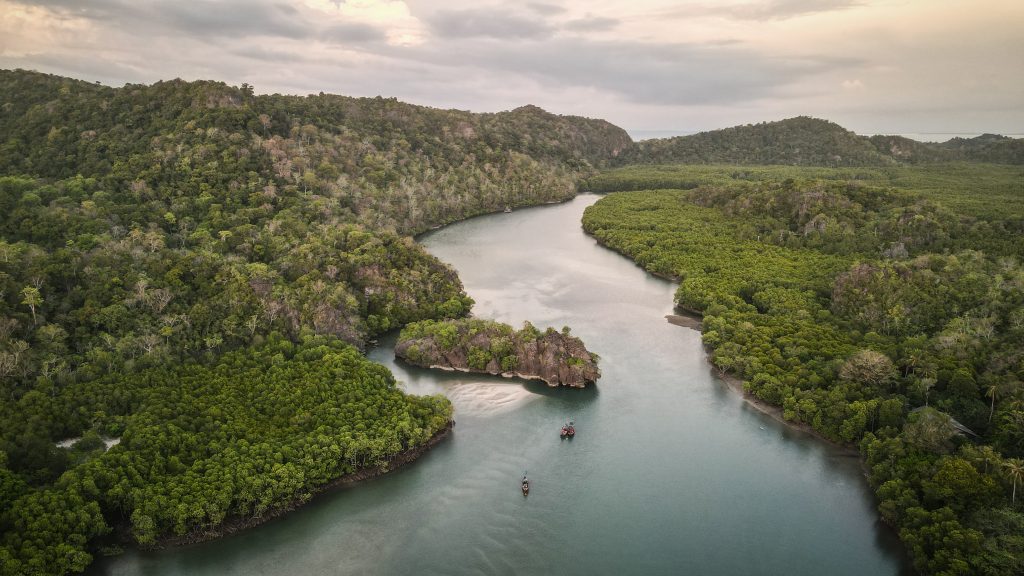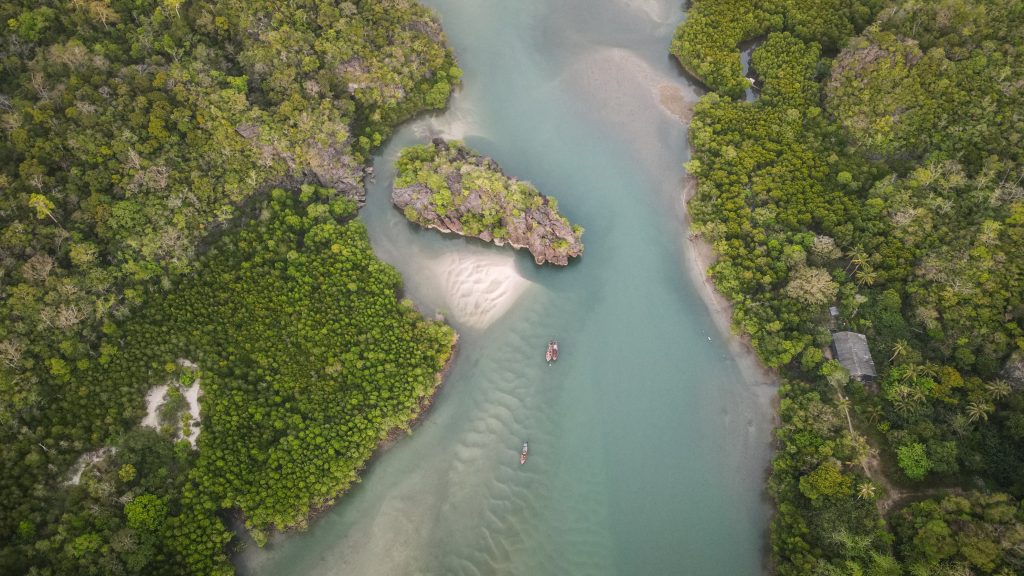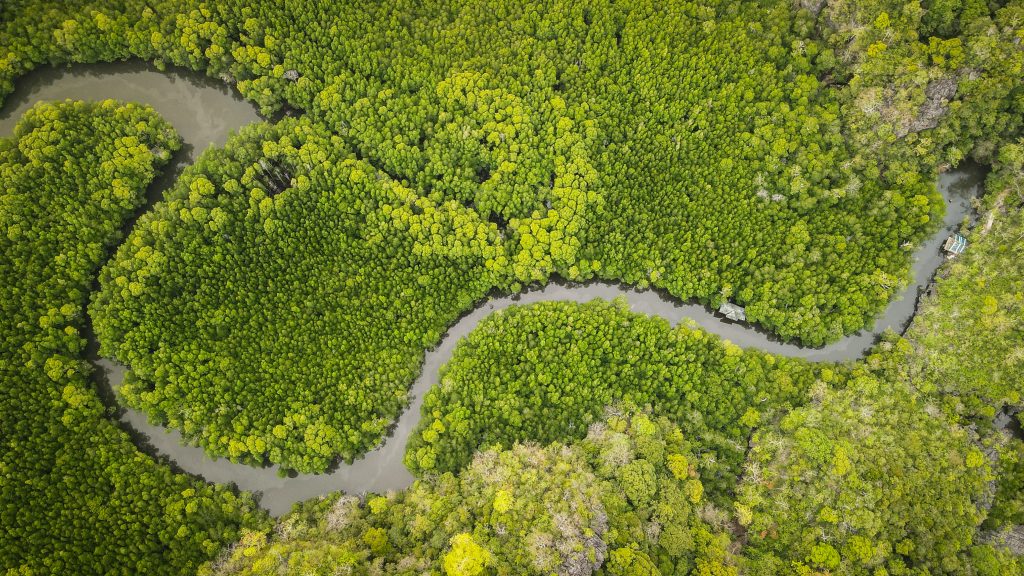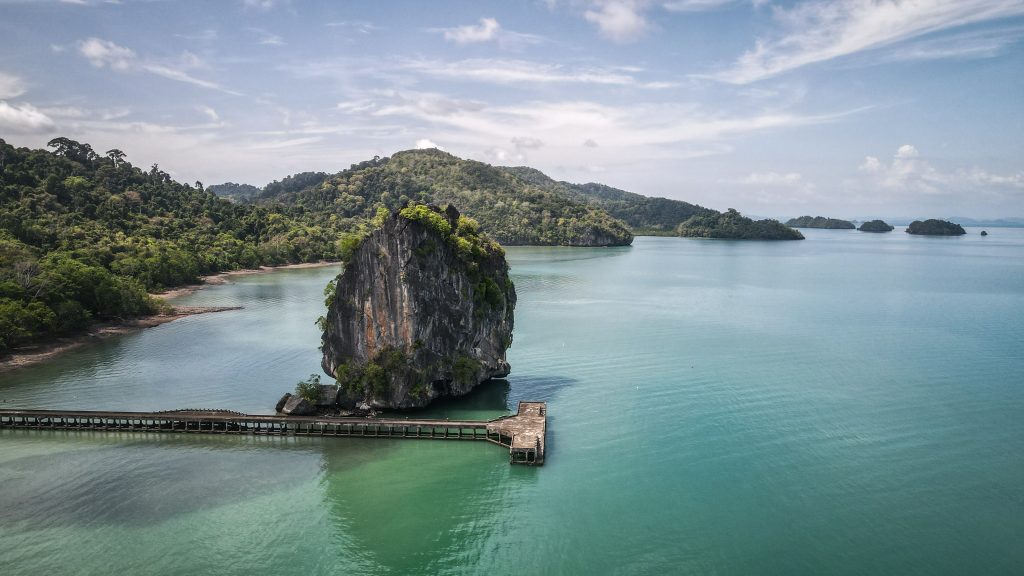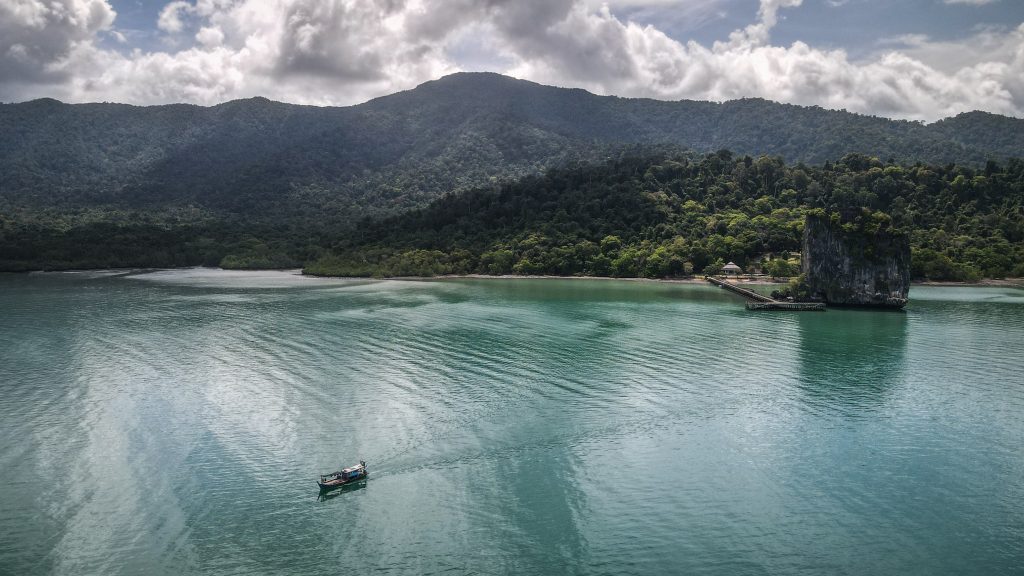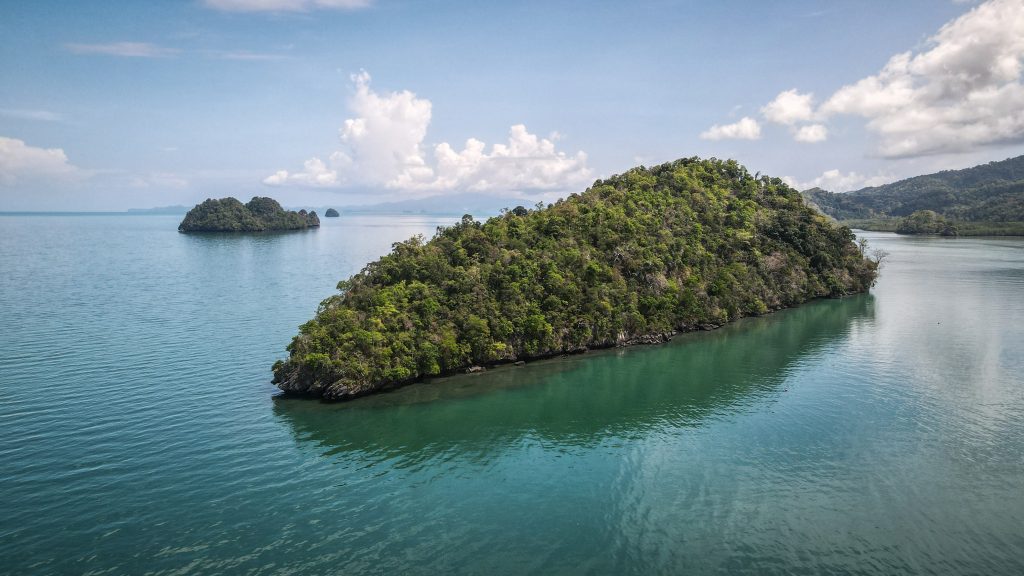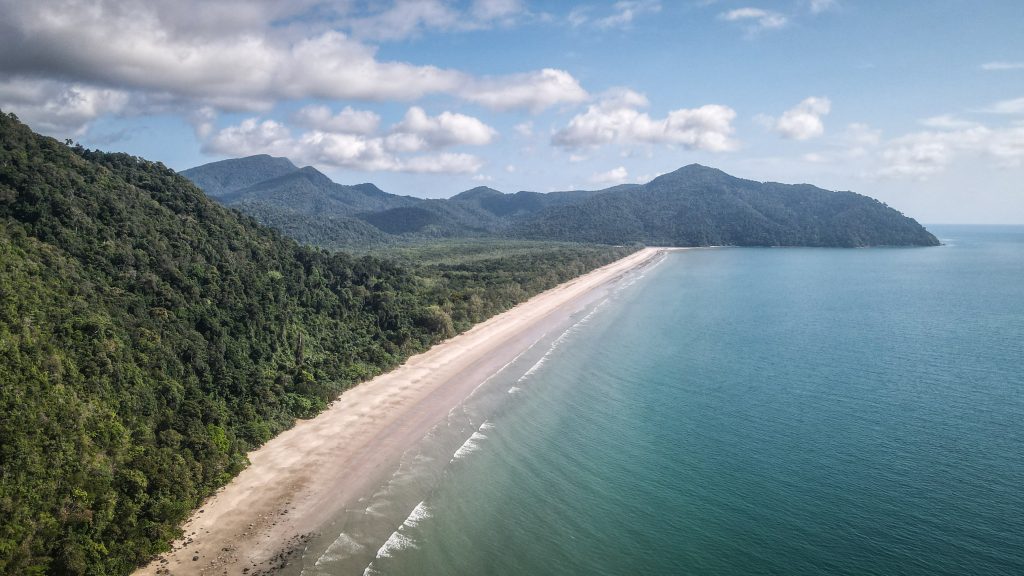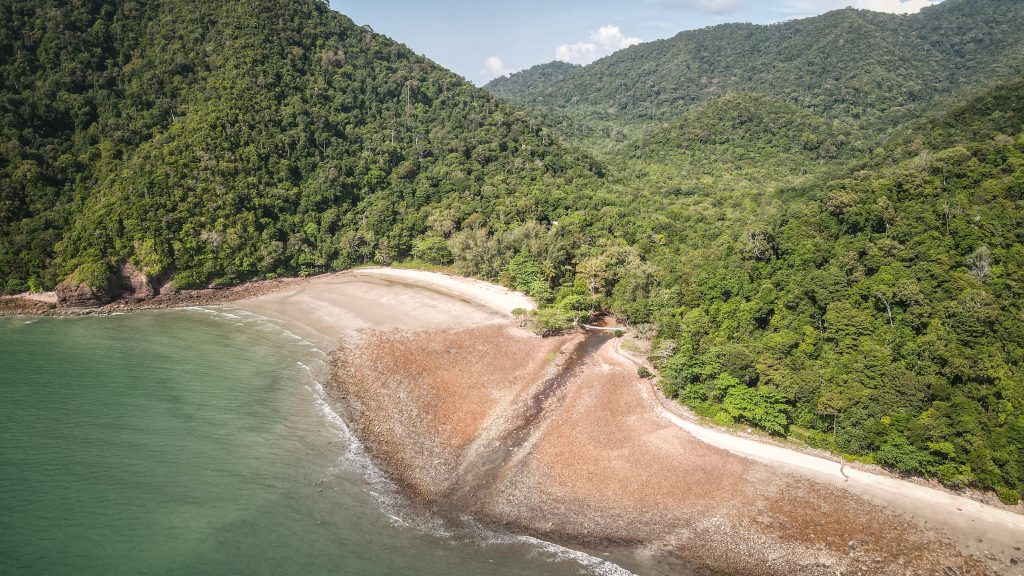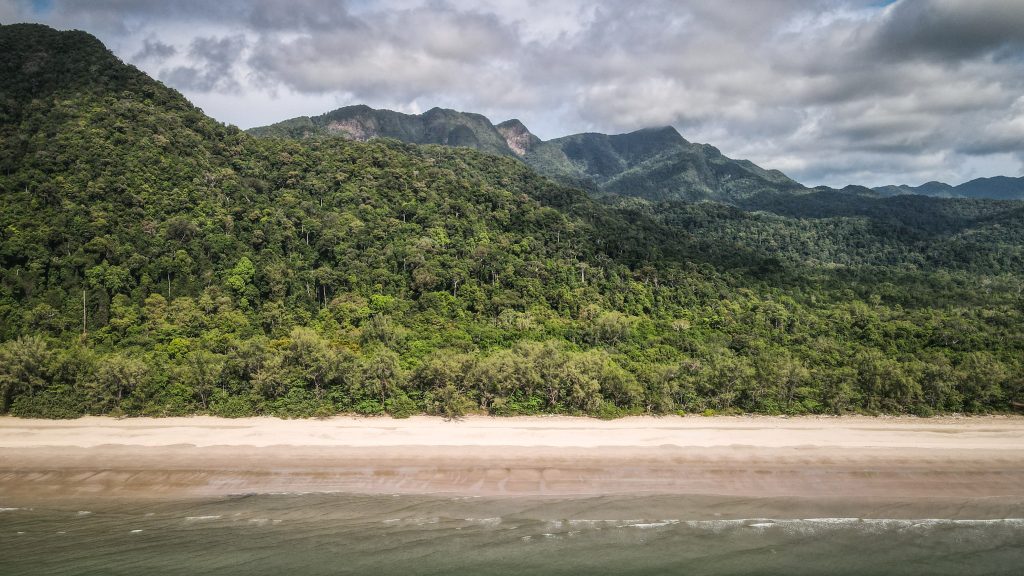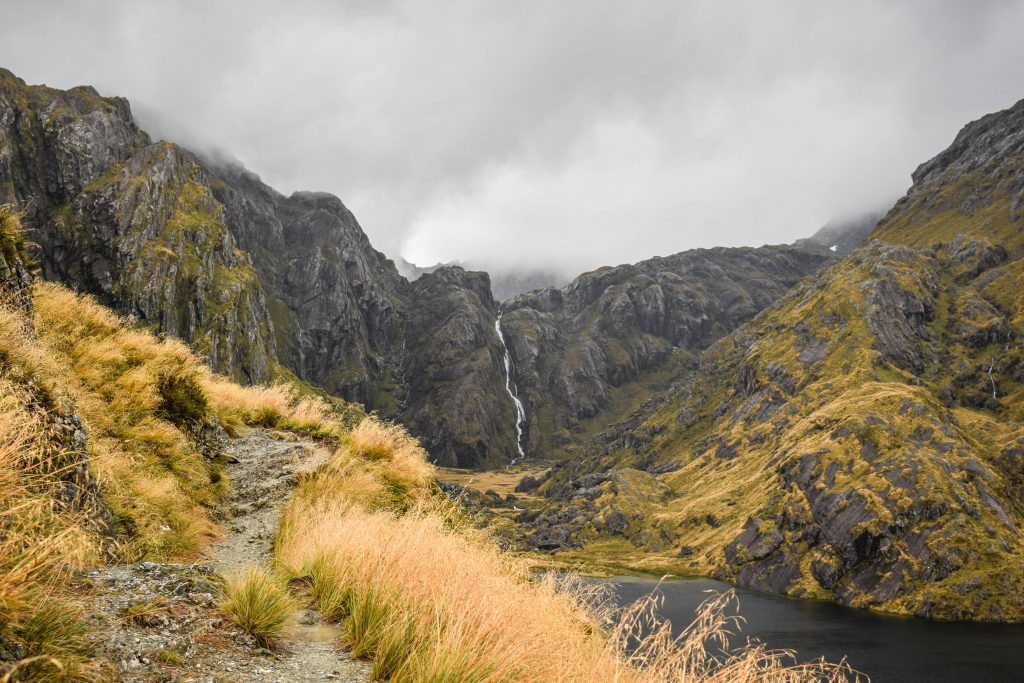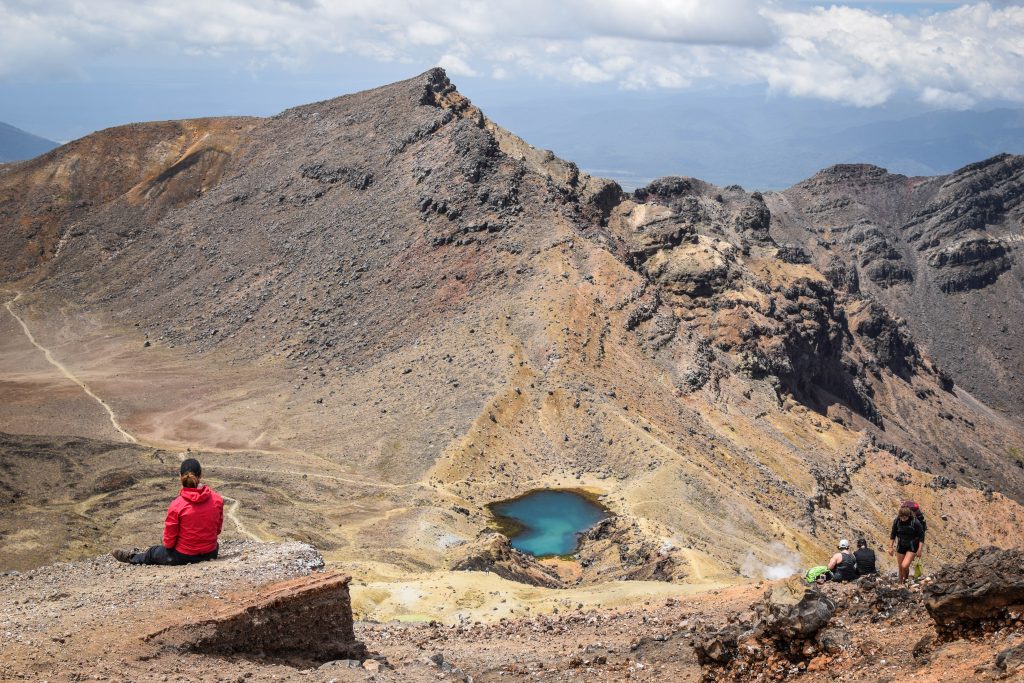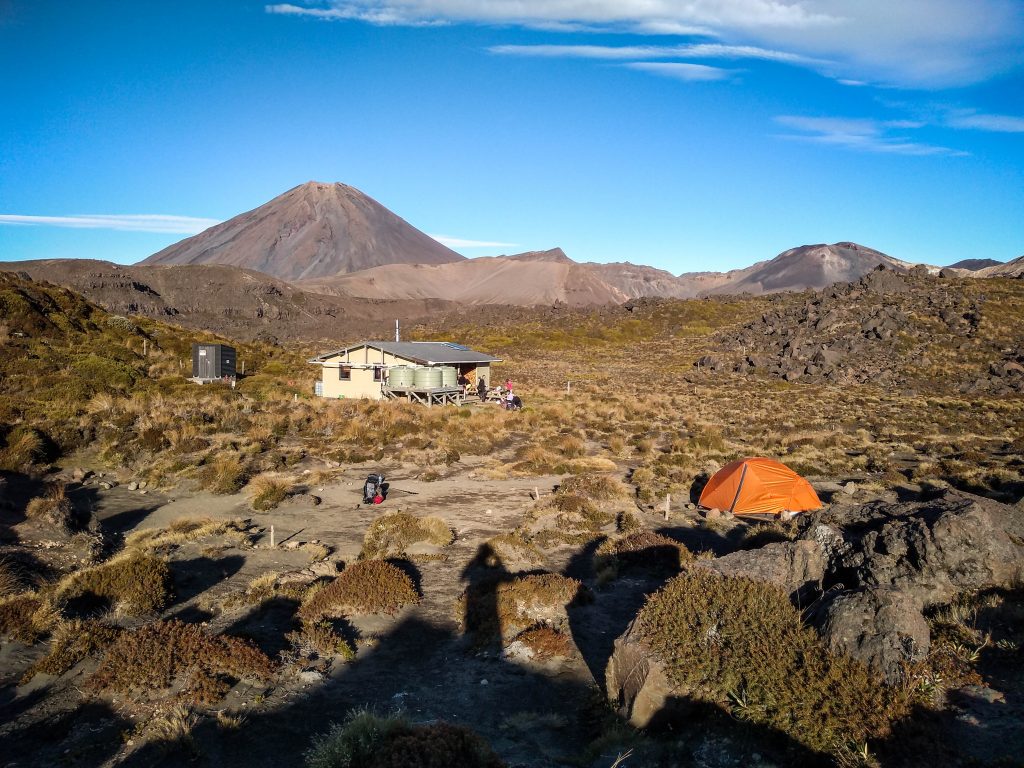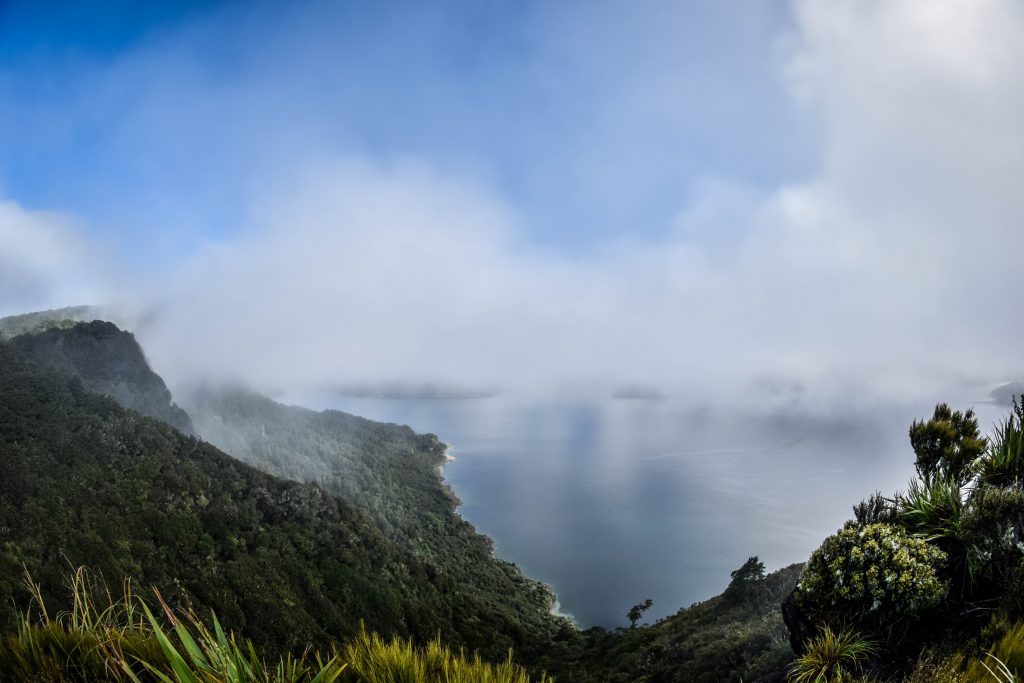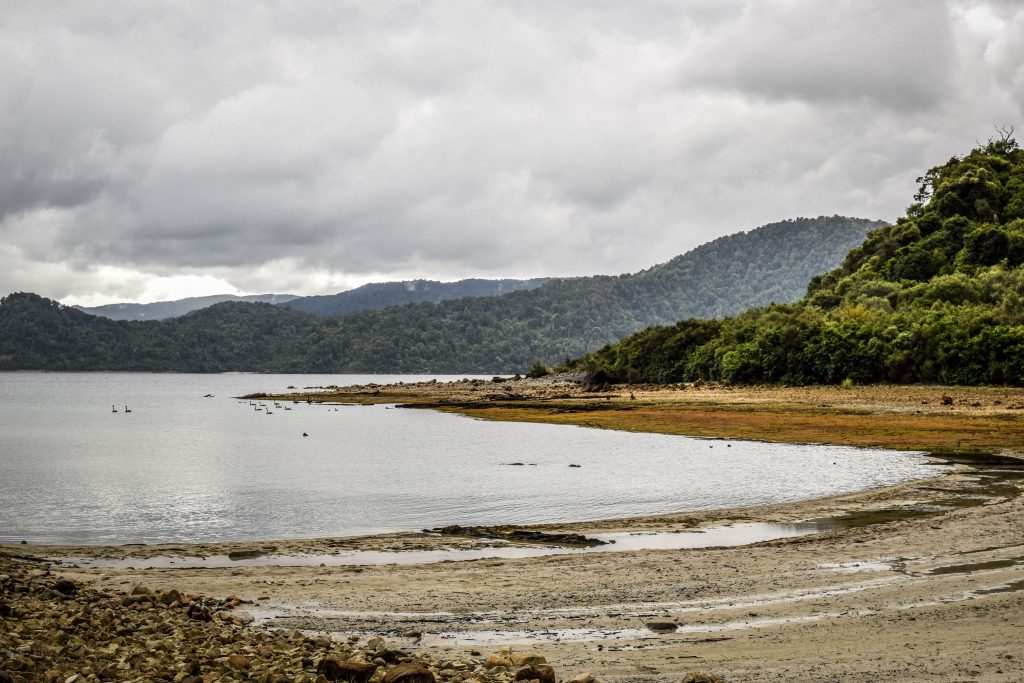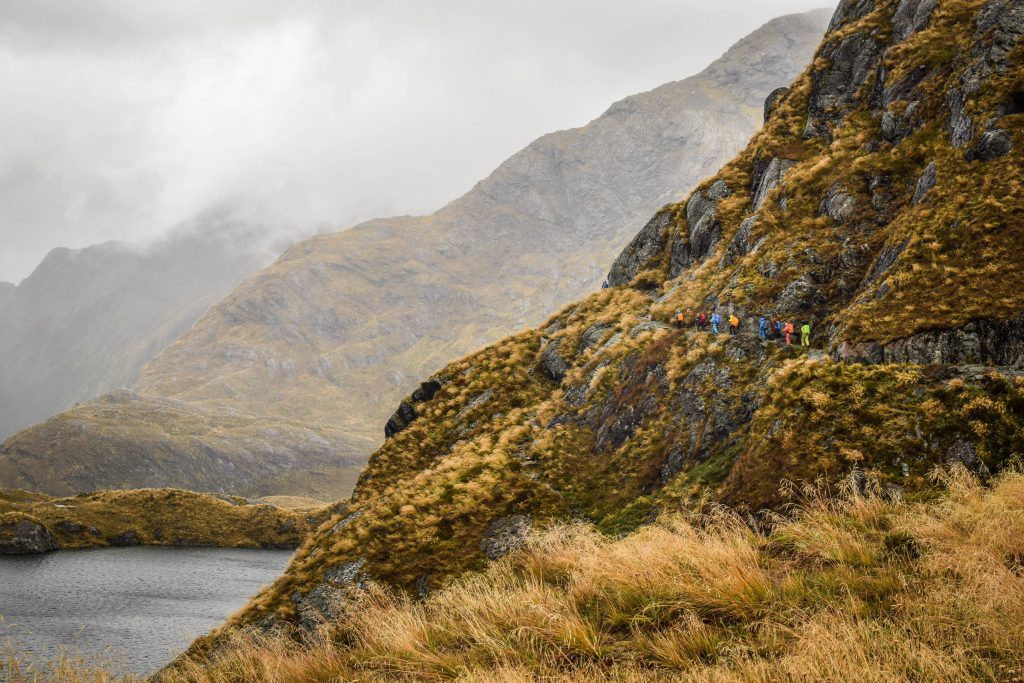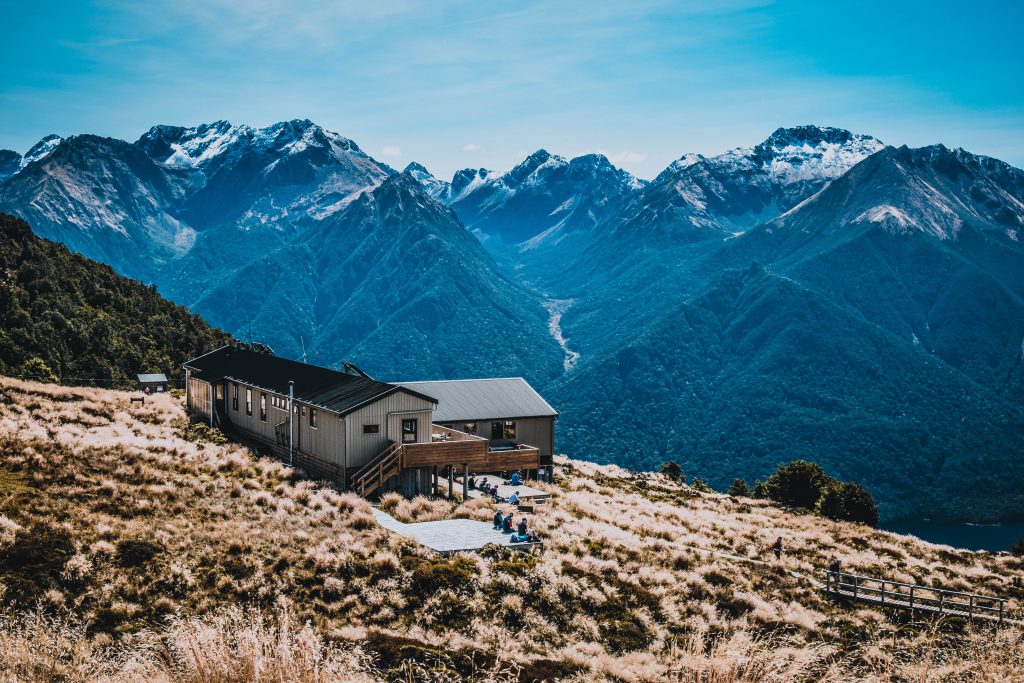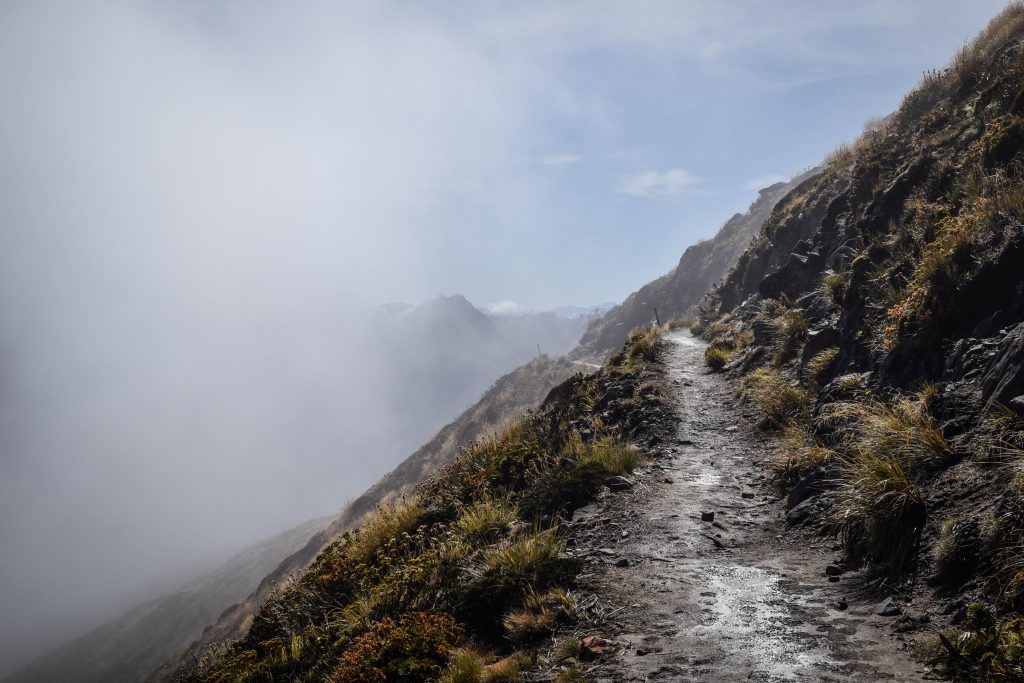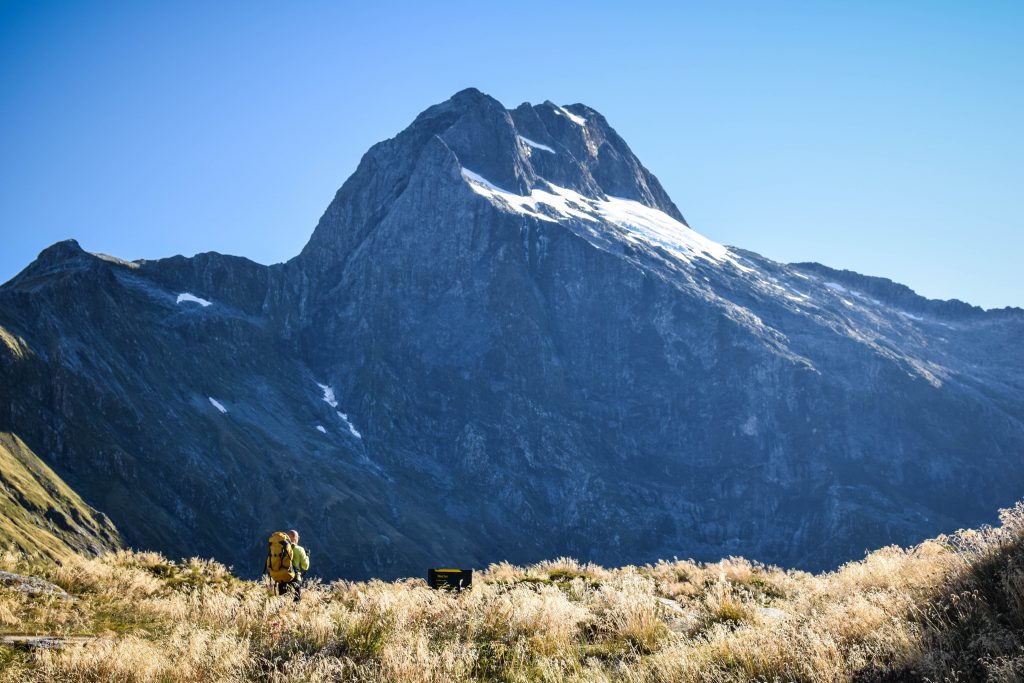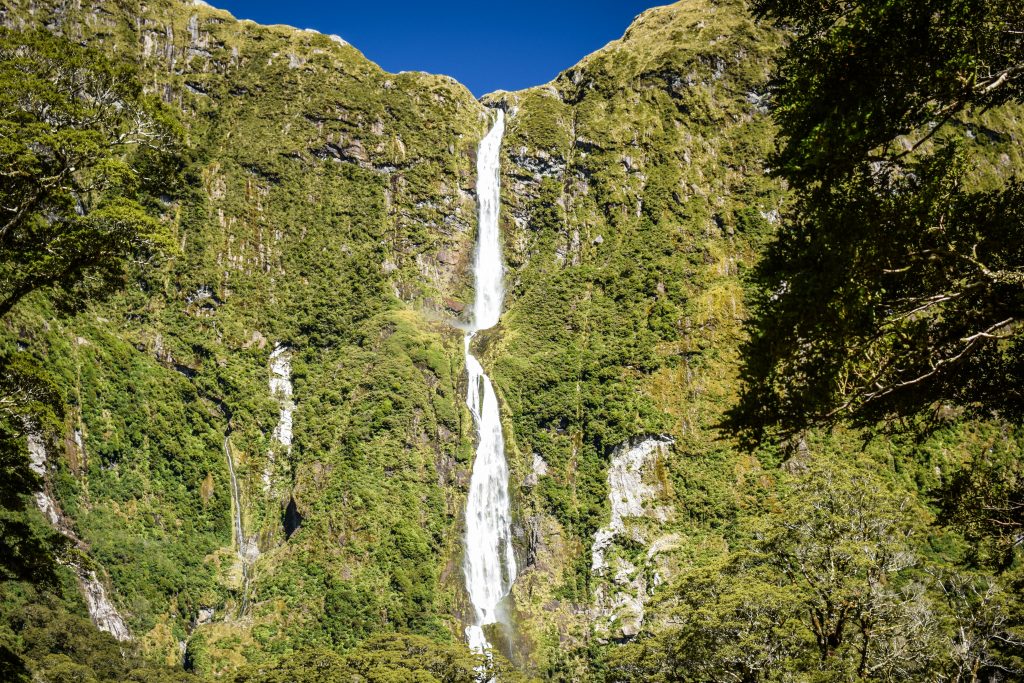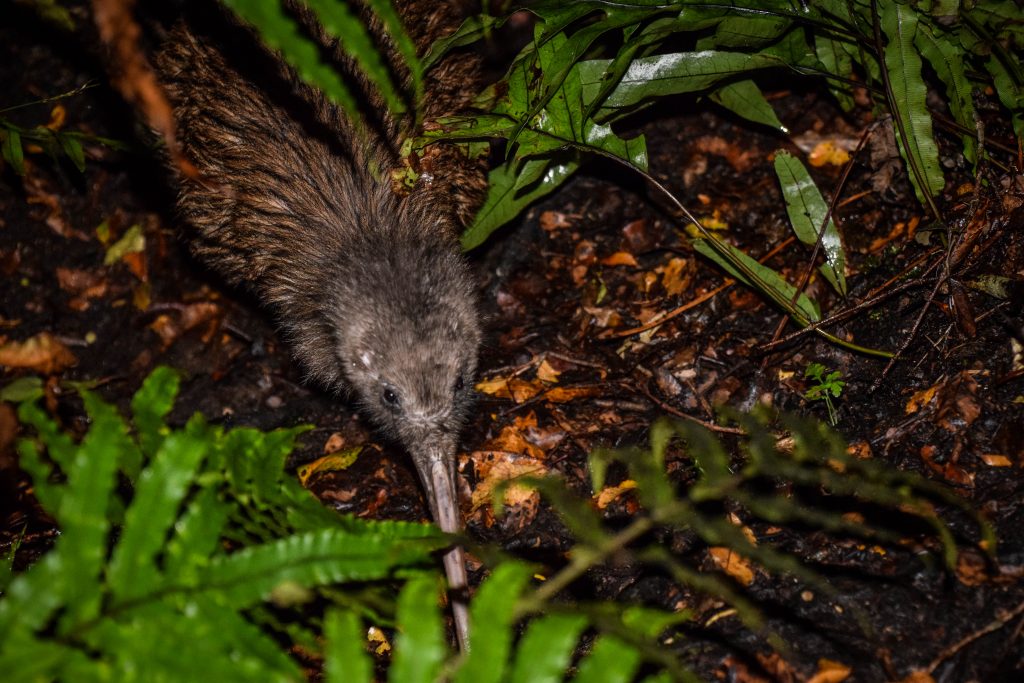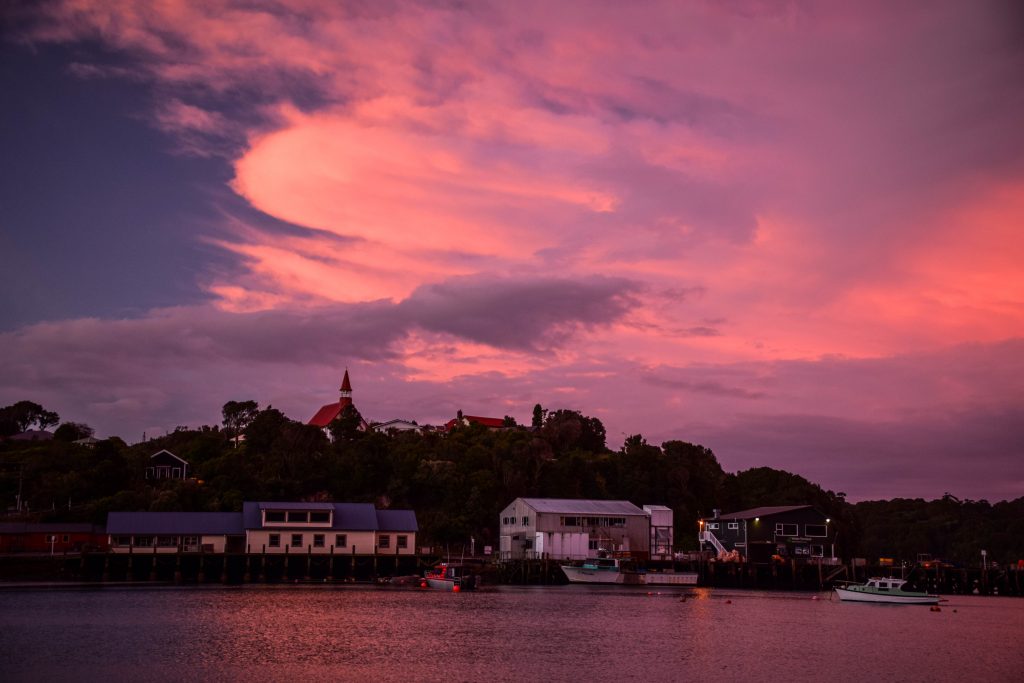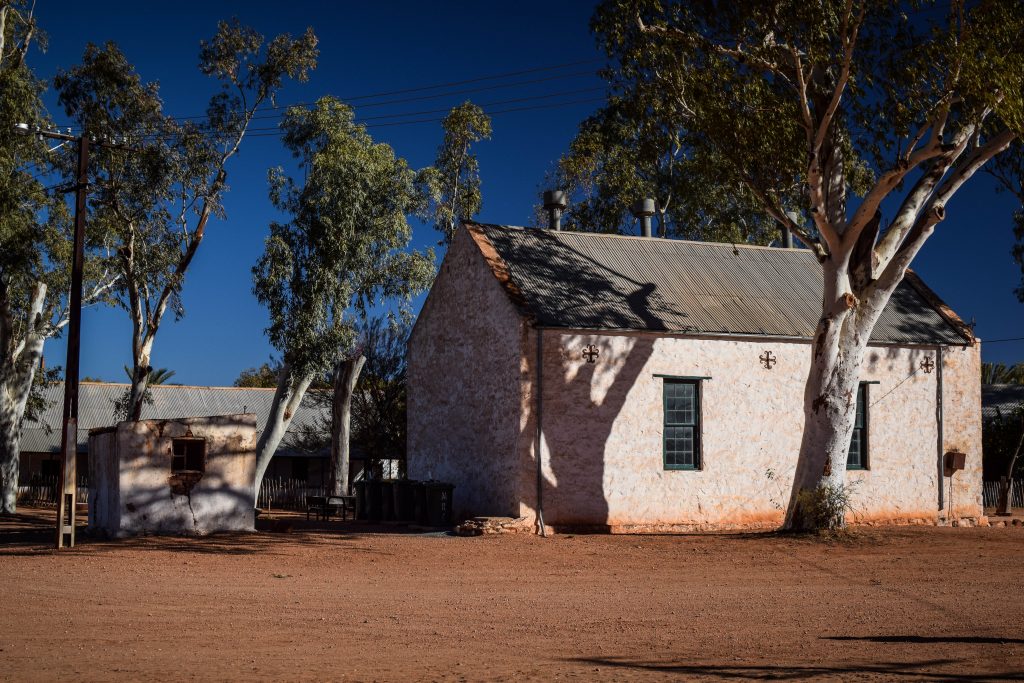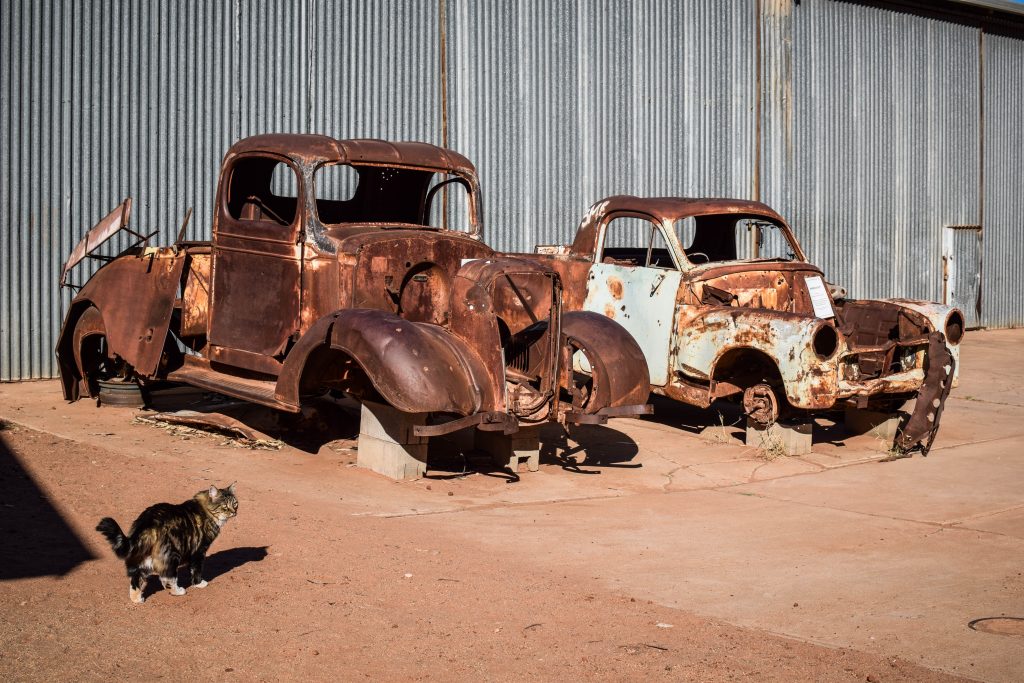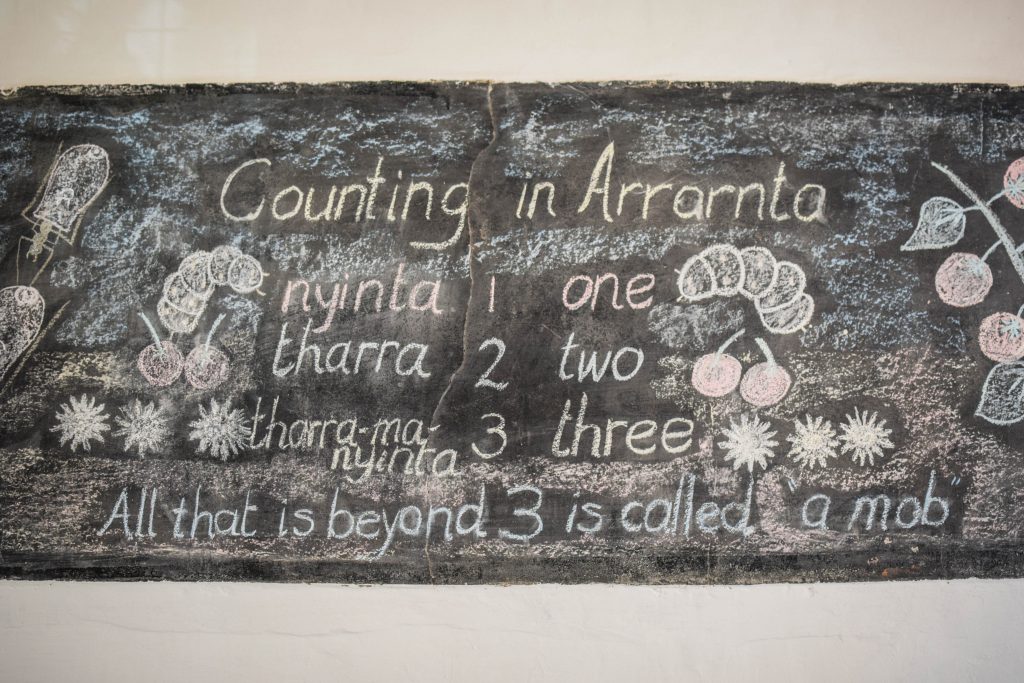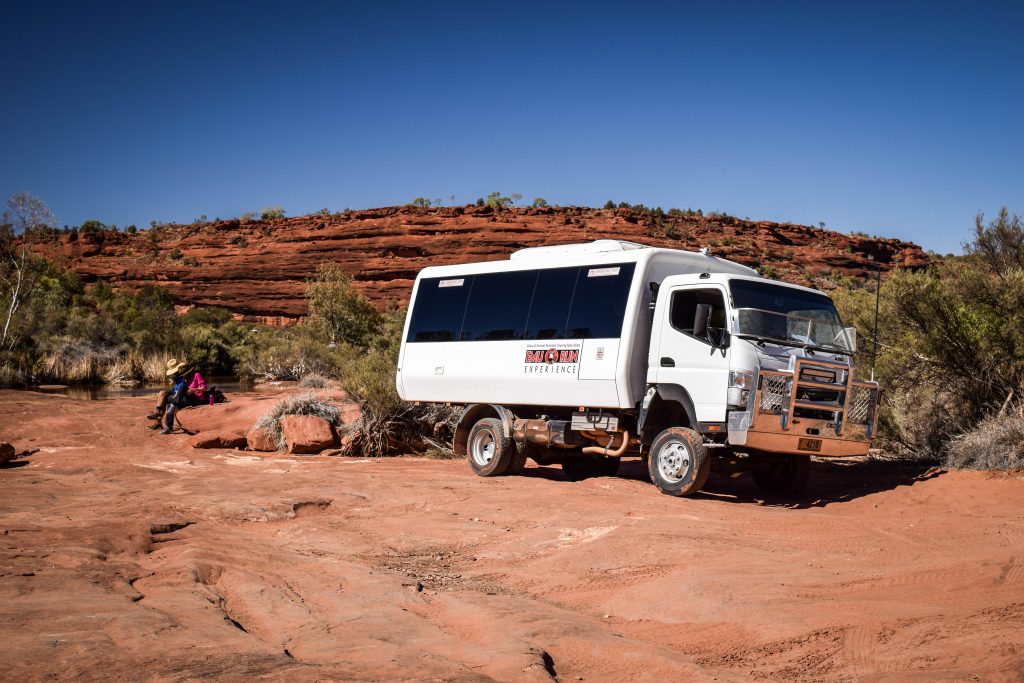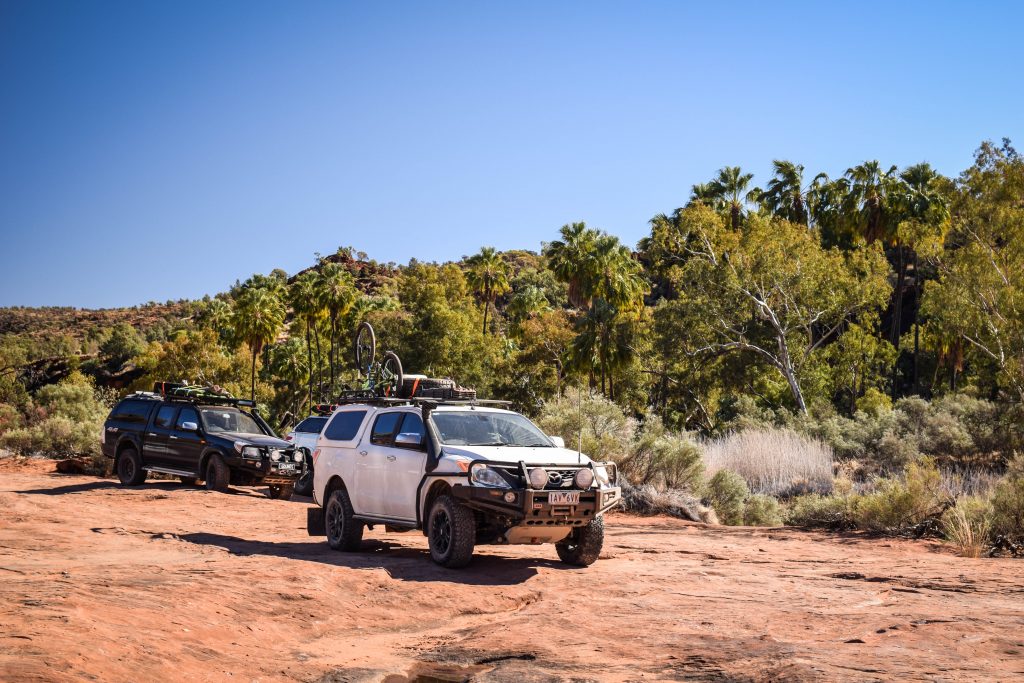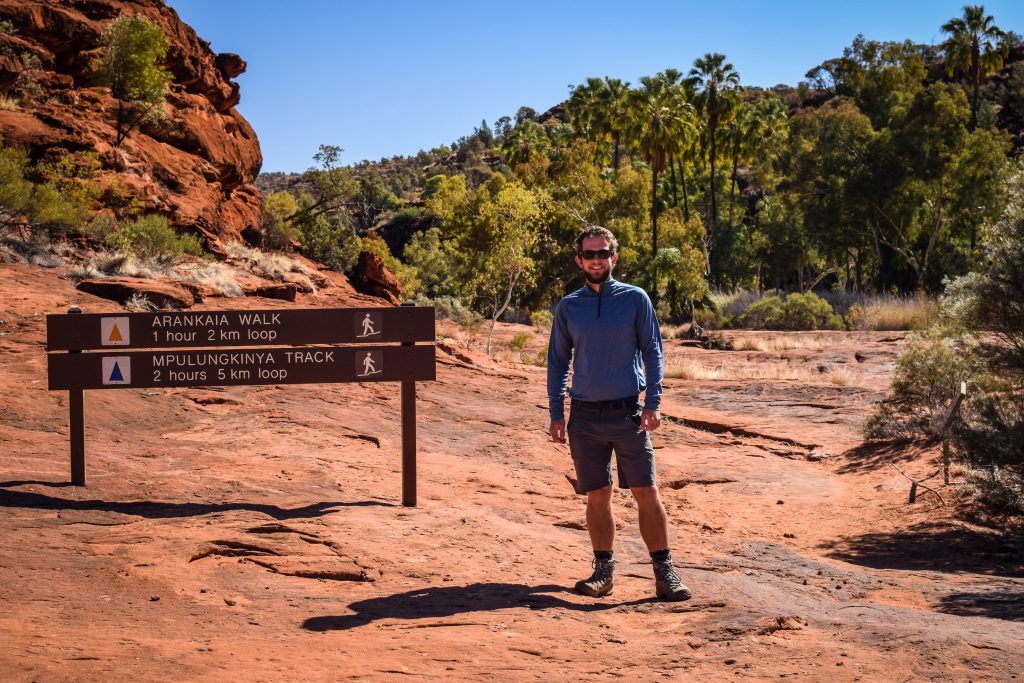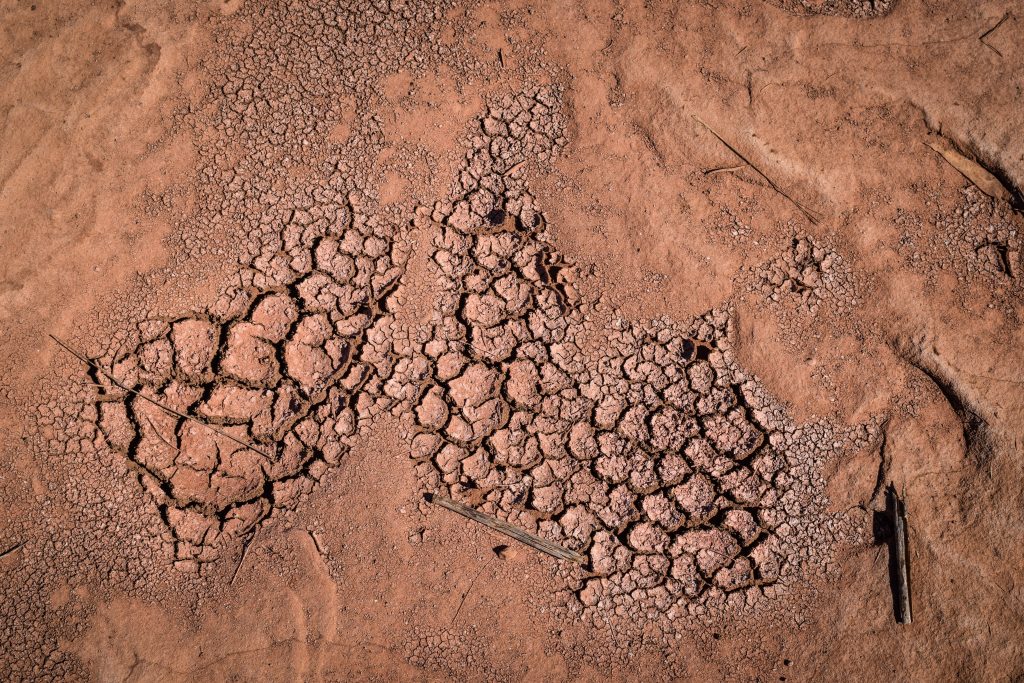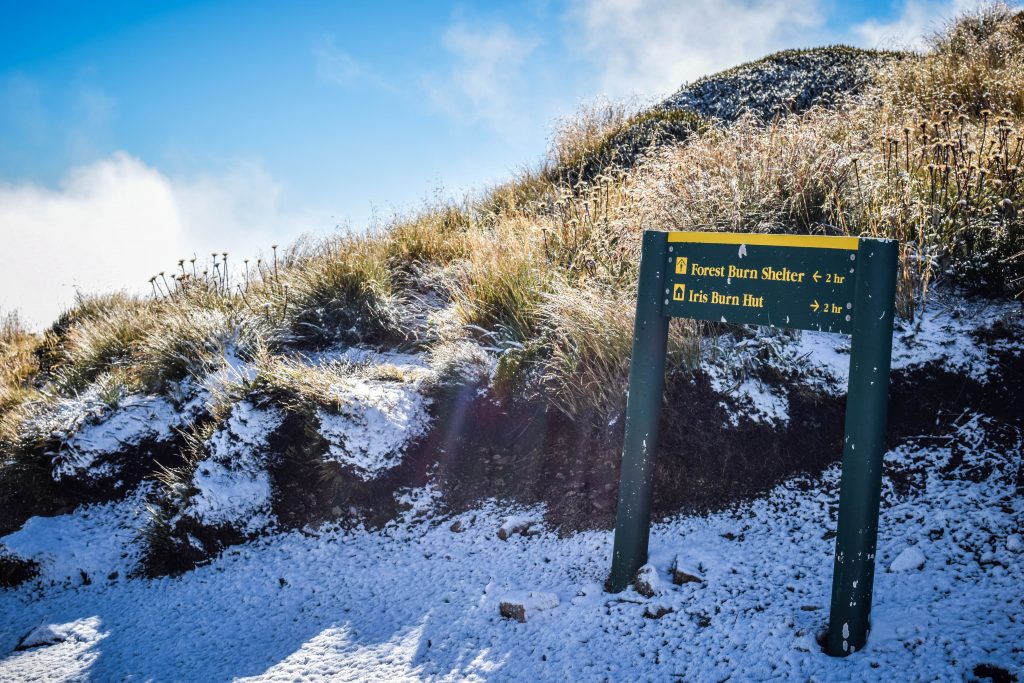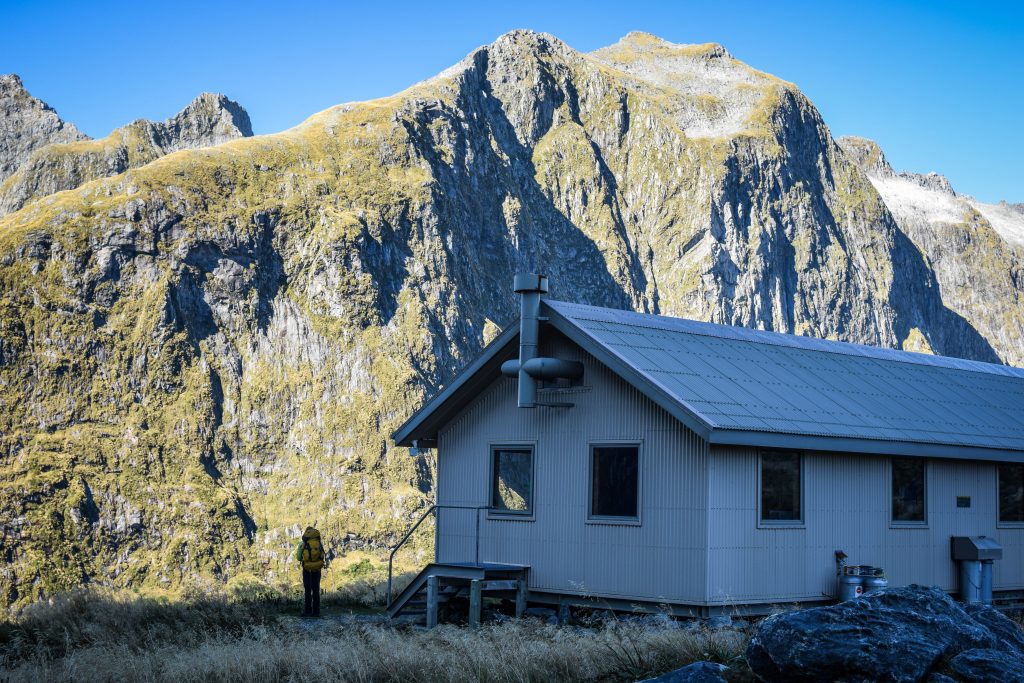It’s a popular tourist destination as it’s conveniently located between Phuket and Koh Samui or Koh Phangan. The main attractions of Khao Sok are Cheow Lan Lake, wildlife, iconic limestone hills, waterfalls, raft houses spread over the lake, trails, caves and rivers. It’s a real paradise for nature lovers and be sure that some time here will stay in your memories forever.
The park covers 739 square kilometres and was officially established on the 22nd of December 1980. Luckily, in the 1970s, Thai students, who had joined communist insurgency groups, set up a stronghold in Khao Sok, as it provided ideal conditions to hide and operate guerilla warfare. They managed to keep at a distance not only the Thai Army but also loggers, miners and hunters. Who knows what the rainforest would look like now if not for coincidences like this one?
In 1982 Rajjaprabha Dam was built, closing off the Pasaeng river and creating 165 km2 of the Cheow Larn Lake. This dam was built to provide a source of electricity to southern Thailand, which by now had become a major tourist destination.
How to get to Khao Sok?
It’s a popular place so arranging transportation from other spots in Thailand will be rather easy. The most convenient way is to start the trip from Krabi, Phuket, Khao Lak or Surat Thani with a minivan. Just ask the travel agent or the receptionist at your hotel and I’m sure they will guide you through the options.
I started from Krabi but in this section of my travel, I had a rental car for about two weeks, so it was really easy to get around. I took a white Toyota Yaris ATIV from PURE Krabi Car Rental and it was easily the best and the most worry-free rental experience that I have ever had. Easy contact through Whatsapp with the owner, no deposit needed, the low maximum liability of 5,000 THB and there was even a free WiFi device on board. Perfect!
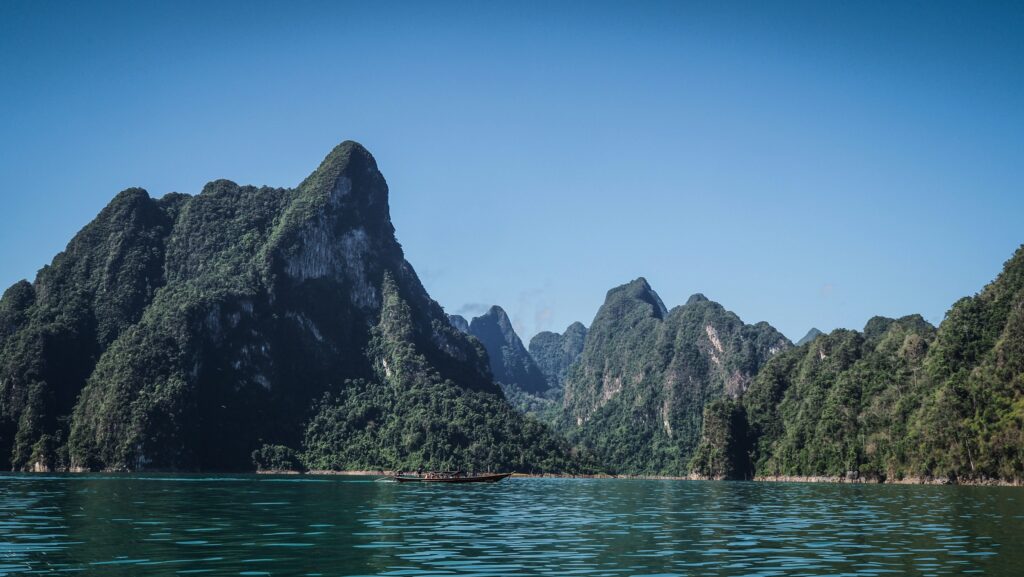
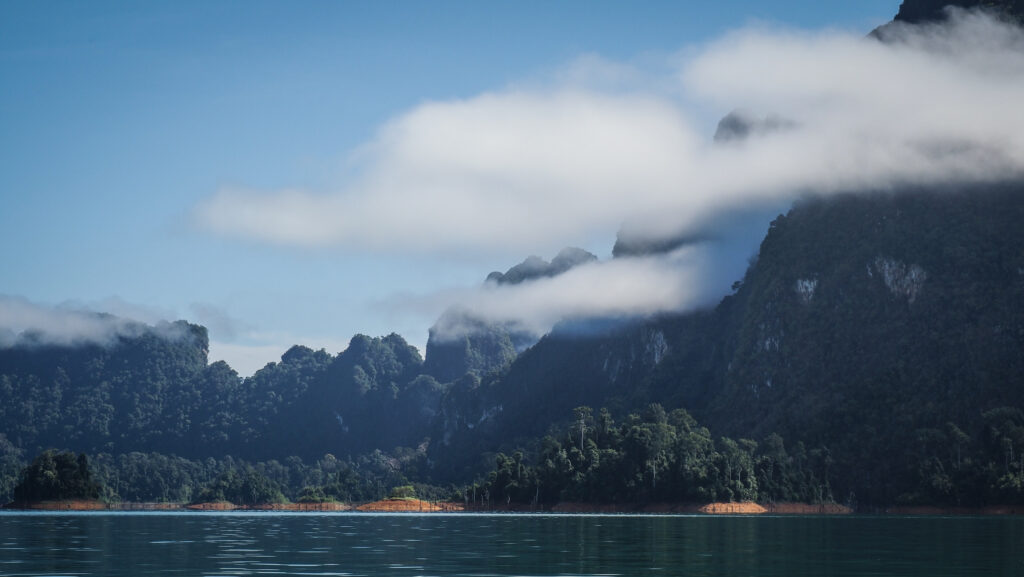
When to go?
It’s a humid jungle environment with high temperatures and heavy rains year-round. The rain intensifies during the months of June through November but it shouldn’t discourage you from visiting this beautiful place. Just be prepared to get wet at any time of the year. Tropical downpours can be strong but usually, they don’t last for long. After all, it’s a rainforest!
If you really hate rain, February is the driest month on average with 30mm of rainfall, so plan your trip at this time.
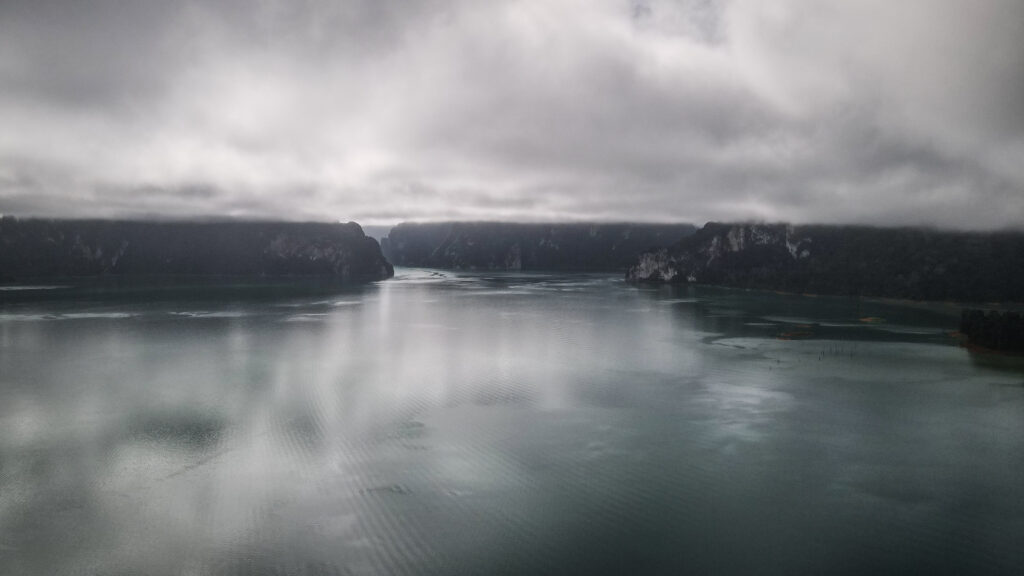
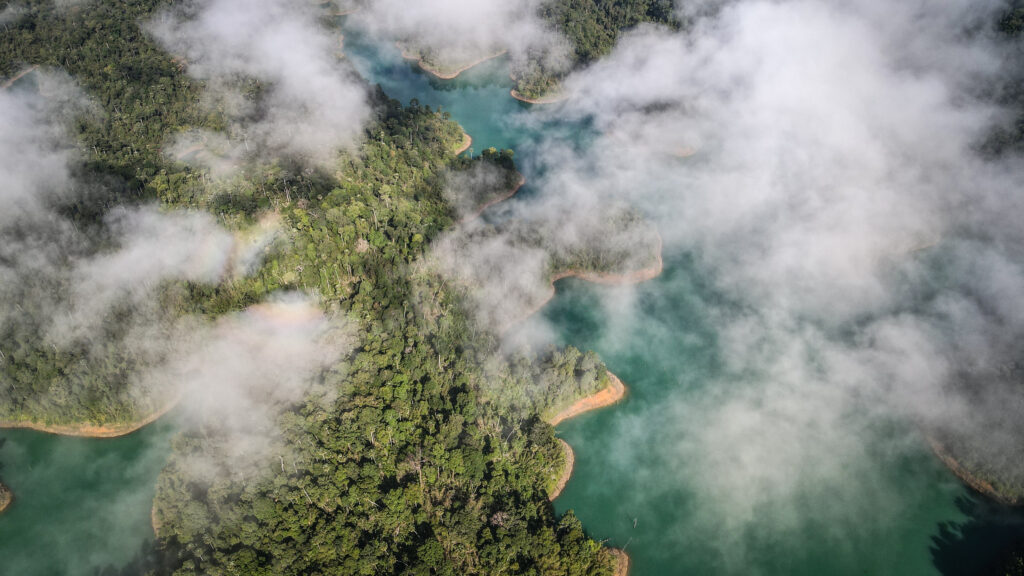
How long to stay?
At least 3 days should be counted to fully enjoy the visit to Khao Sok. I spent 2 days on the trip to Cheow Larn Lake and 1 additional day hanging around the village and enjoying a guided night jungle walk. Anything shorter would have felt rushed.
Where to stay?
I booked a room at Khao Sok Jungle Huts Resort which was an excellent choice. Free parking, mosquito net, great restaurant and unbelievably friendly host. I arranged all my trips here. The place is very green with easy access to the river and you can occasionally spot some monkeys.
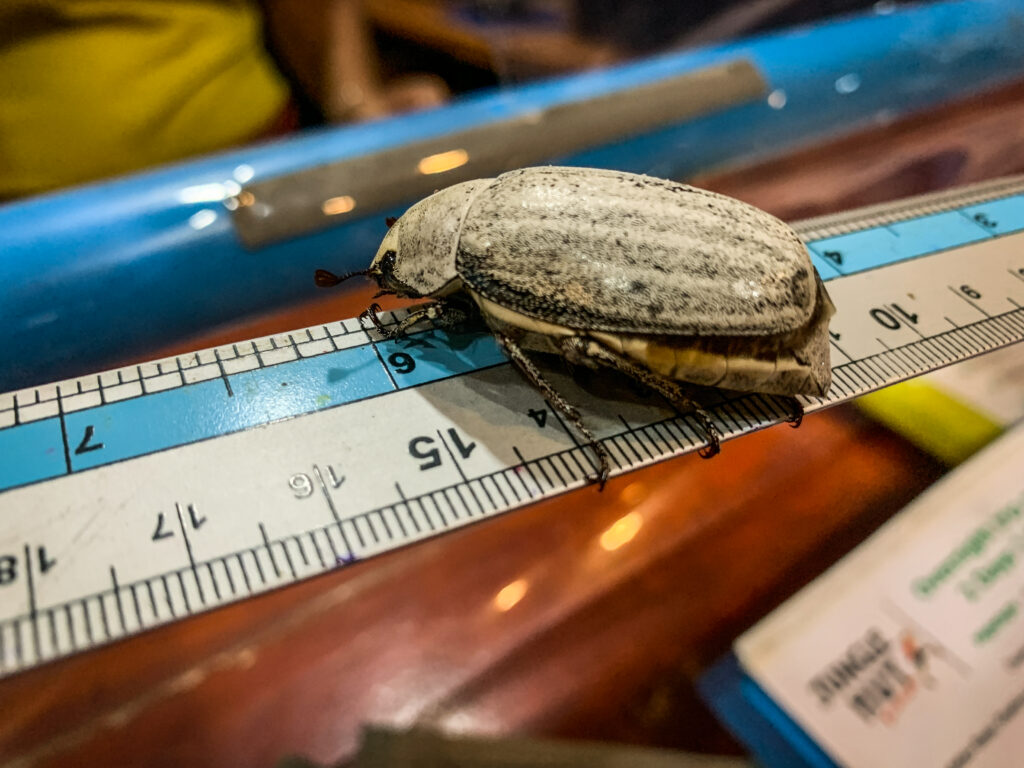
What to take with you?
You won’t need much, but make sure these items find a place in your bag:
- Rain jacket
- Sports shoes or trekking sandals that can get wet (for the cave tour)
- Long trousers and long socks
- Swimsuit
- Insect repellant with DEET (there will be leeches)
- Sunglasses
- Hat
National Park fees and opening hours
According to the official website, as of June 2022, the entrance fees for foreigners are 200 THB for adults and 100 THB for children 3-14 years old. Thai citizens pay 40 Baht for adults and 20 Baht for children. The entrance fees are valid for multiple days only if staying inside the park, either when camping or staying at raft houses on the lake. In other cases, you will have to buy a new ticket every day, which I find a bit ridiculous. After coming back from the tour of raft houses, I still wanted to do the guided night walk and I had to pay again for the new entrance ticket.
Luckily, it seems that the prices went down because when I was visiting in March 2022, the entrance ticket was 300 THB.
The park is open from 6 AM to 6 PM daily, all year round. Entering after 6 PM is possible if you do a night walk with a guide.
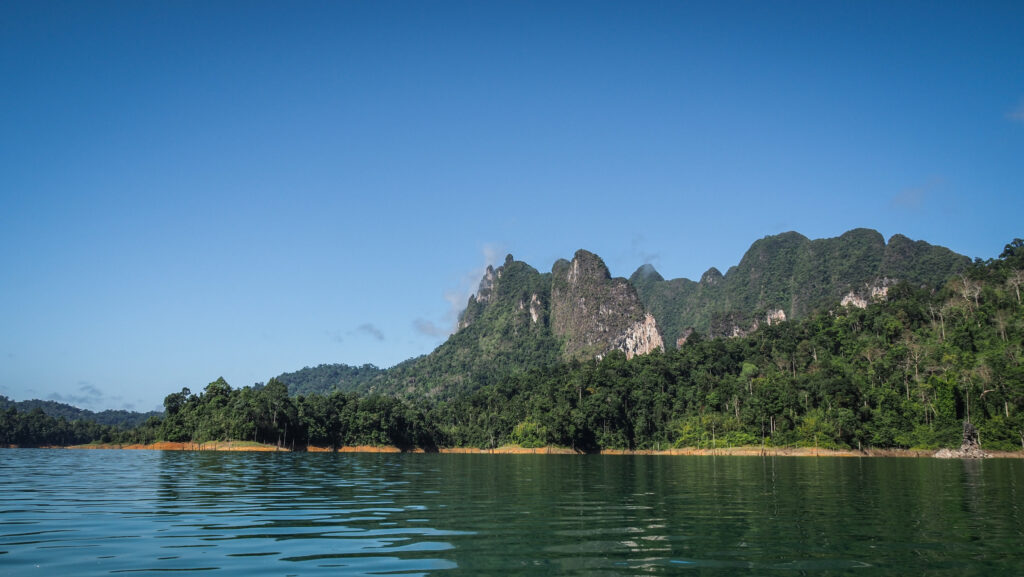
What to do in Khao Sok?
The park can be split into two popular areas, which are 67 km apart. The first one is around the national park headquarters and Khao Sok Village, where it is possible to hike a number of trails, join guided night walks, visit waterfalls or take part in activities on the river. The second one is around Cheow Lan Lake and is popular for boat trips, raft houses, caves and limestone mountains.
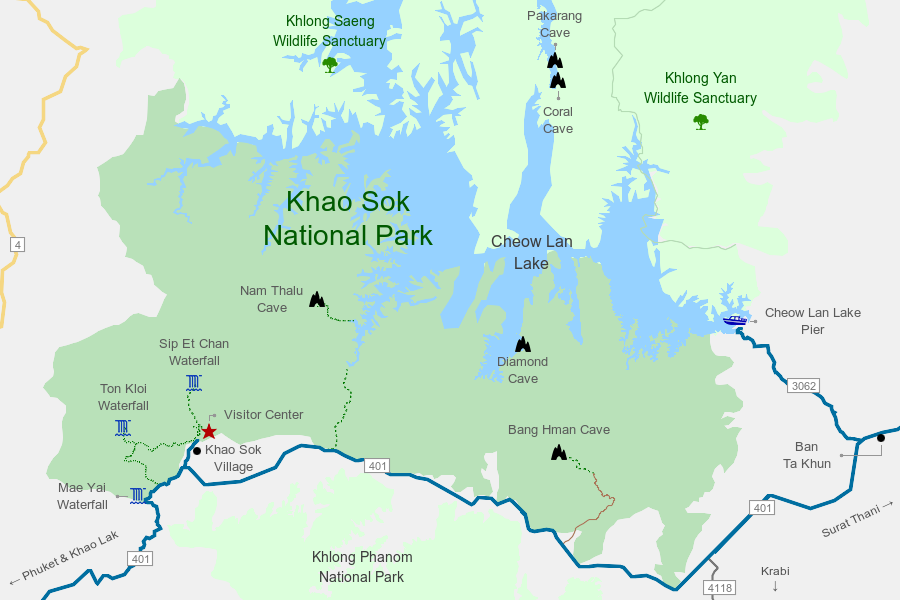
Overnight trip to Cheow Lan Lake
I booked a 2D 1N trip at my hotel one day in advance. The cost should be around 2,500 THB but ask if the entrance ticket to the national park is included.
The minibus picked me and some other guests up and we were taken to Cheow Lan Lake Pier where we bought national park tickets and boarded a long tail boat. The ride on the lake was extremely fun. Interestingly, the lake was created in 1982 as part of a damming project to provide hydroelectricity to the south of Thailand. It stretches over an area of 165 km2. We were surrounded by limestone hills and it all felt like going deeper into some unknown Jurrasic Park.
There are many raft houses spread all over the lake, from which it is possible to visit caves, viewpoints, limestone hills and get to some exciting trails. The one I stayed at was called the Smiley Lakehouse. Very pleasant place with simple rooms and private bathrooms. As I was travelling alone, I was asked to share a room with another solo traveller. Of course, I agreed and ended up with a new friend from Germany.
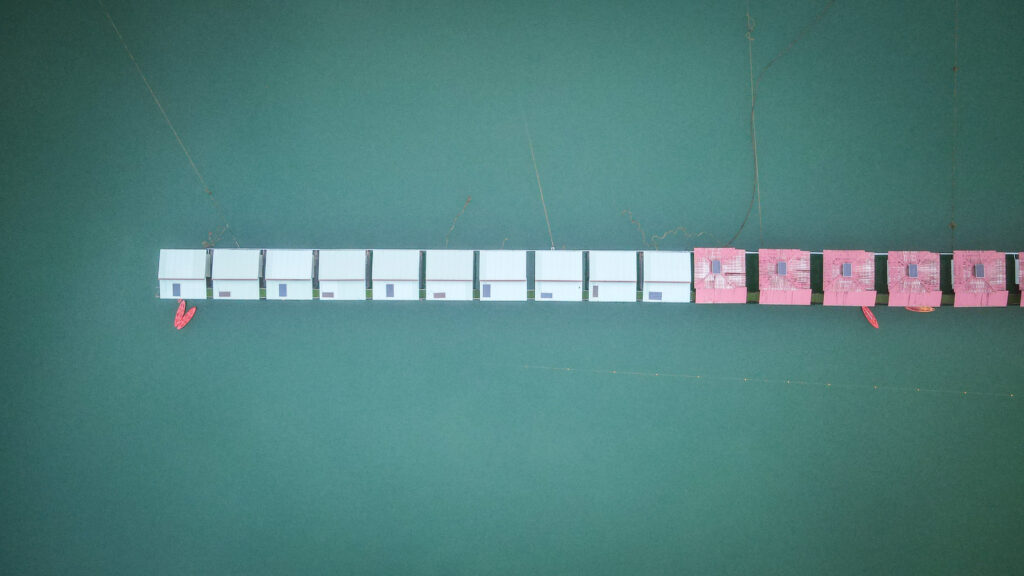


We had a bit over one hour to chill out, swim in the lake or use one of many available kayaks. I decided to paddle around a bit but it was really tough in that sunny weather!
Then, it was time to return to the boat and head to Nam Thalu Cave. For me, it was the most adventurous part of visiting Khao Sok National Park. Once inside the cave, you wade or maybe even have to swim through the water. Keep all your valuables in a waterproof bag or ask your guide to store them for you. Due to the weather forecast for the afternoon which included rain, we were a bit hurried. Apparently, it may be extremely dangerous if you get caught inside the cave in heavy rain as the water level rises very fast.
We saw plenty of bats and spiders that can be recognized by their eyes reflecting the light. There could be also some snakes around but we didn’t see any. It is definitely not a place to go with small kids and you should wear proper shoes, not flip-flops.
As soon as we exited the cave, the heavy rain started so we were really just in time! It was raining the whole way back to the boat. Rain in the jungle means one thing. Be careful of leeches! A few people in our group were affected so it’s best to stop from time to time and check your body and the body of your buddy. They can move really fast so pay attention to the area around your ankles but also under your armpits.
We went back to the raft house where we had time to relax while waiting for dinner. It was really amazing to see when the rain stopped and clouds were rolling over the massive limestone hills.
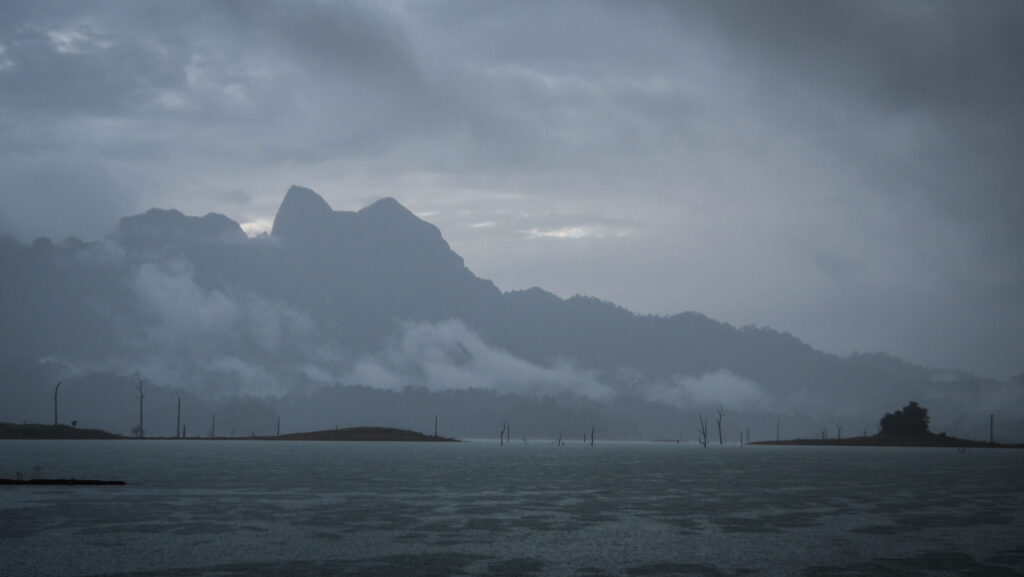
The night was calm and in the early morning, we boarded the boat again, this time looking for wildlife. We saw a lot of monkeys and some hornbills, but unfortunately no elephants.

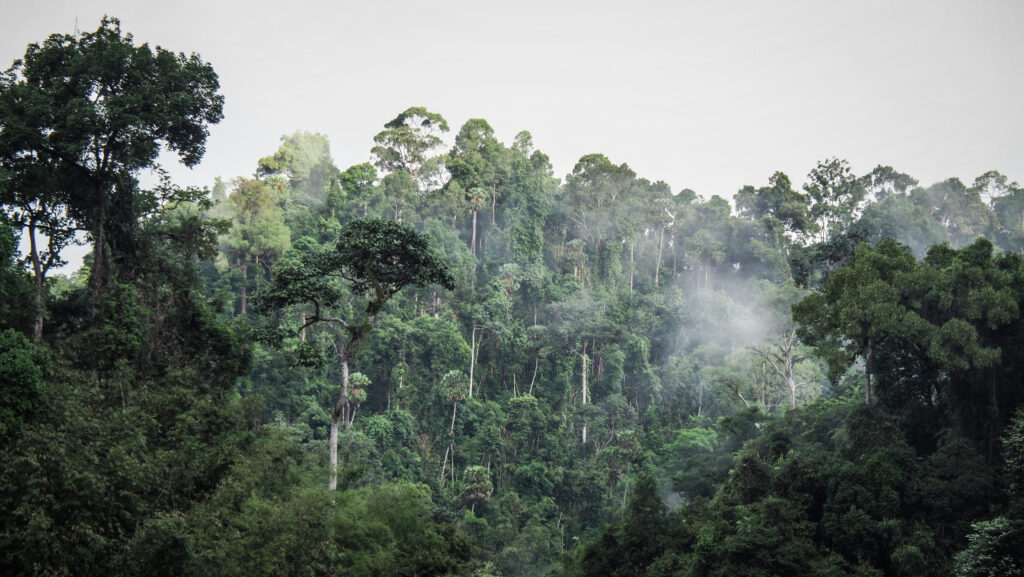
After breakfast, it was time to pack the bags and go back to the pier, with two more stops on the way: Khao Sam Kloe, which is a group of 3 beautiful rocks, and Pra Kie Phet Cave, a small and this time without water but with bats and some huge spiders which scared the shit out of me, even though they are harmless for humans.
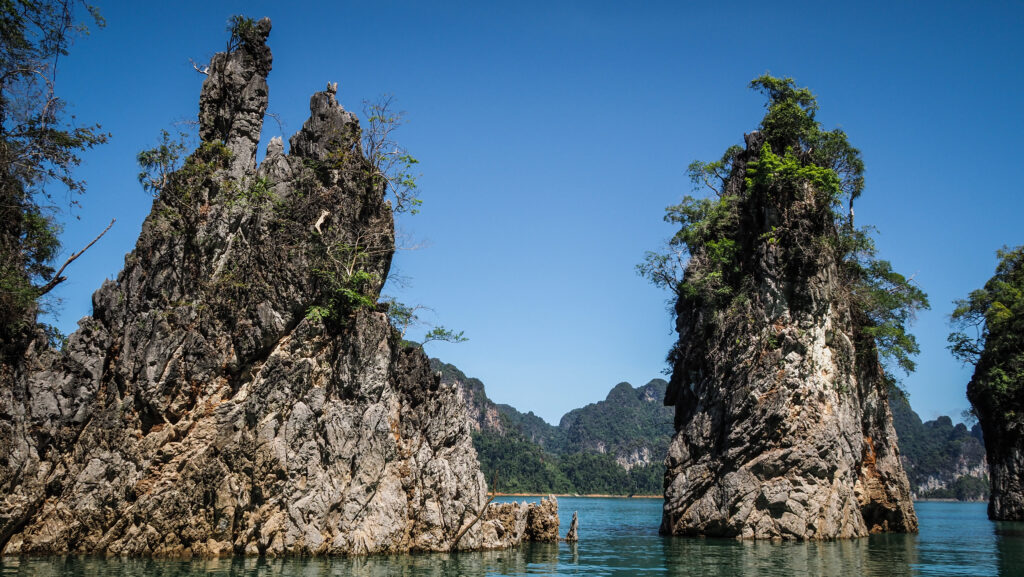
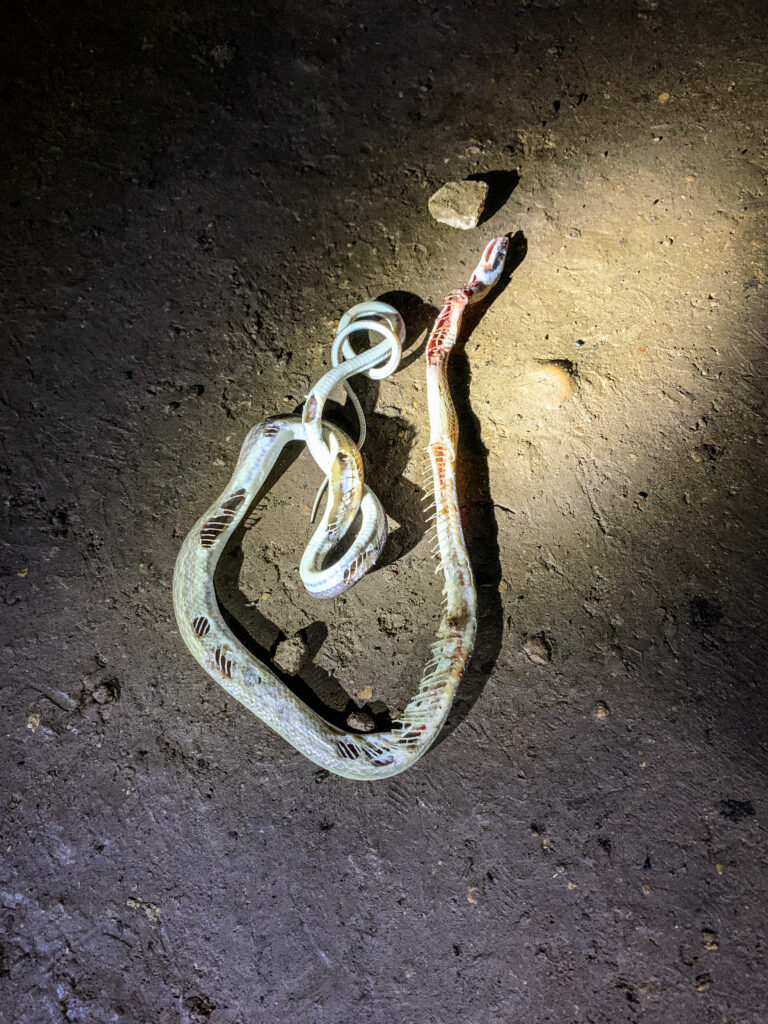

In the end, the minibus transported us back to Khao Sok Village with a short lunch stop at Ratchaprapha Dam Scenic Viewpoint. All in all, it was a wonderful trip, absolutely worth the price. I highly recommend spending the night at the lake instead of doing only a day trip. It will add so much more to the experience!
You can also arrange your trip independently, by arriving at Cheow Lan Lake Pier and getting a boat from there to the floating house that you booked before or simply arranging the boat trip for a few hours. However, to see all the other attractions around, I believe it’s better to go for an organized trip with a guide, which includes an overnight stay in a raft house.
Night jungle walk
It’s actually a really fun experience, even though you don’t go deep in the jungle but rather follow the dirt road, around the park’s headquarters. We saw some frogs, snakes, spiders, and lizards as well as stick insects.
Rafflesia flower hike
Rafflesia is a parasitic plant with no leaves or roots on its own. It invades the liana vines and like a parasite, it absorbs all the vine’s nutrients. Once a year small buds begin to develop beneath the root bark of the vine. As they mature, they swell, breaking through the bark. They then burst open revealing the massive flower, which can be up to 80 cm! I haven’t done this hike but it’s definitely on my list, even in other places in South East Asia!
Ton Kloi Waterfall
One of the hikes that starts at the national park headquarters. It is 7 km long and runs along the Sok River. The first 2.9 km of the trail, until a checkpoint guarded by rangers, doesn’t require any guide to walk. However, if you want to continue all the way to the end, the guide is obligatory. There are many other, smaller waterfalls along that trail.
Sip Et Chan Falls
This 11-tiered waterfall is accessible by a nearly 4 km long trail starting from the north side of the campground next to the park’s headquarters. You can walk the first 400-50 meters on a wooden boardwalk freely, but a guide is required for the remaining distance.
Mae Yai Waterfall
It’s outside of the national park and you can just see it from the road while driving from Khao Lak. Otherwise, I wouldn’t say that it’s worth a dedicated trip.
Khao Sok Elephant Sanctuary
It’s one of the sanctuaries with really good comments from visitors. You may be able to make food for the elephants, feed and walk with them, but riding or bathing is absolutely forbidden.
River tubing or bamboo rafting
Both activities are especially fun in wet months when the water level in the river is high. It’s best to arrange it directly at your hotel or at street agencies.
Off the beaten trail – Khlong Phanom National Park
Rarely visited park, with a very nice loop hiking trail which should take you under 2 hours. You have a couple of viewpoints along the way until you finally arrive at the big tree. The entrance fee is quite cheap at 100 THB.
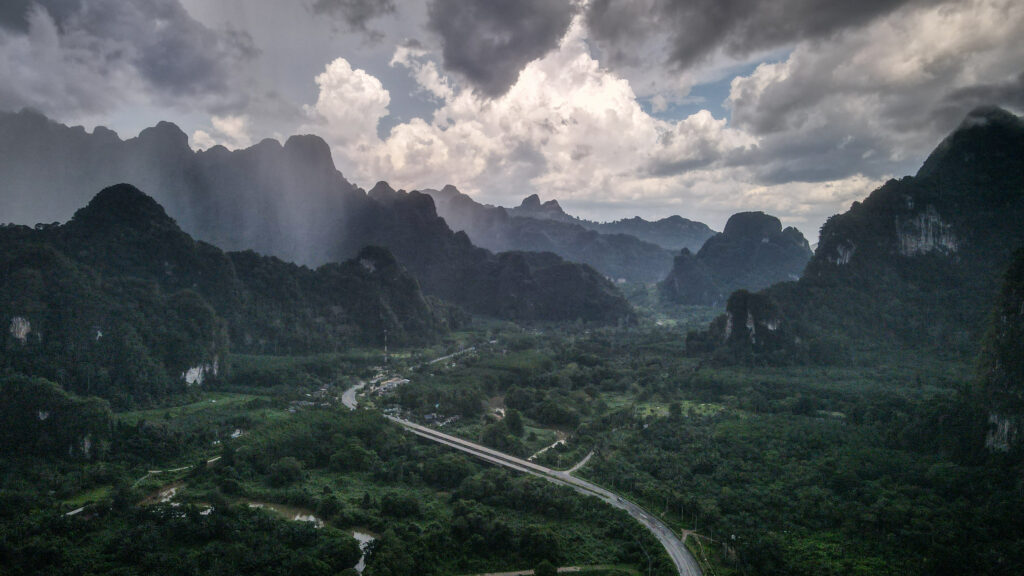
Summary
It was a magical time in nature and if you are looking for something else than Thai islands, look no further. There are plenty of activities to do both for very active people and also for those lazier ones. Spend the night in a raft house, waking up early to admire the morning mist and listen to the sounds of the jungle. This is one of these experiences that you will remember for a lifetime. I am a big nature enthusiast and I had 3 days of an absolute blast.

